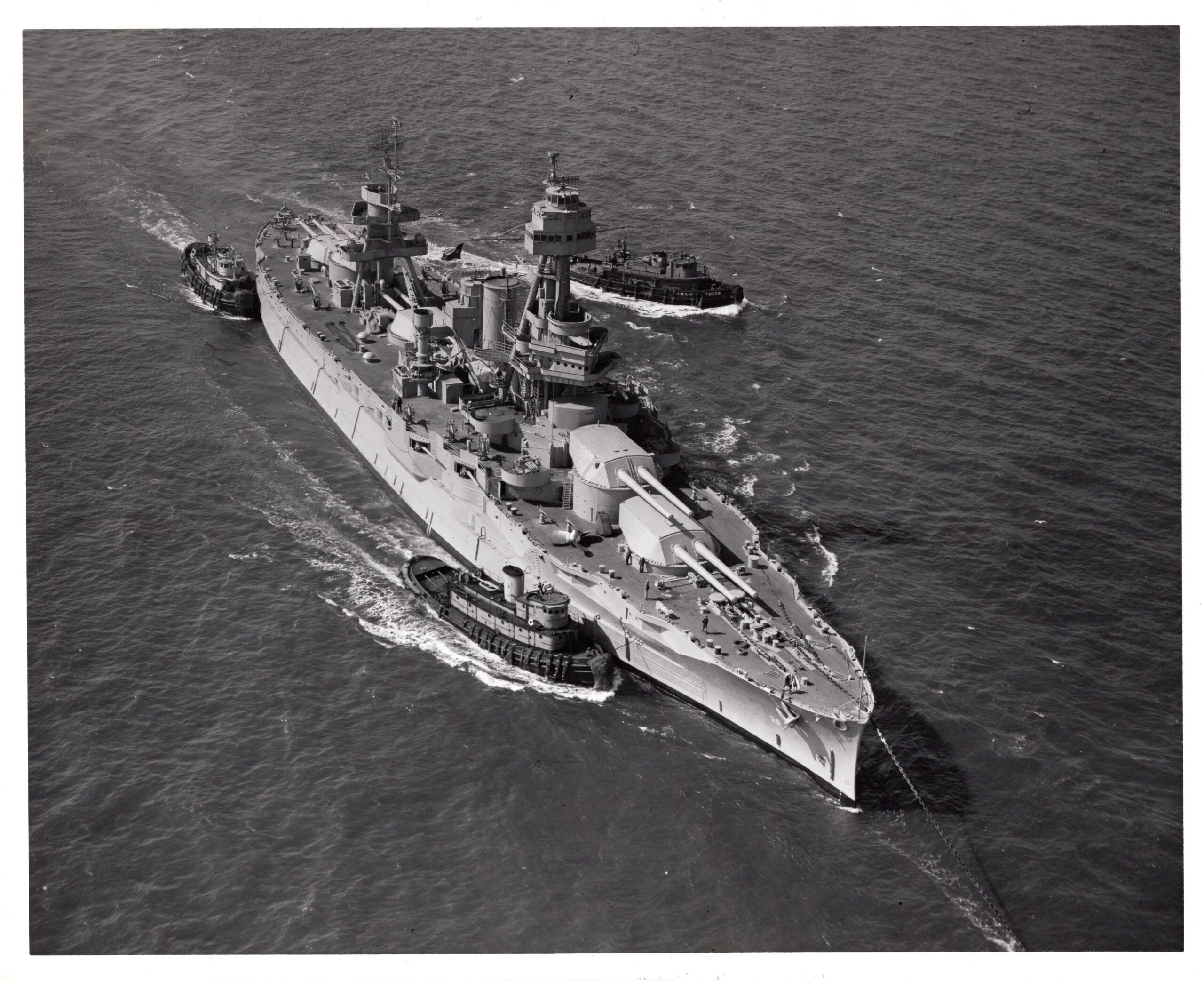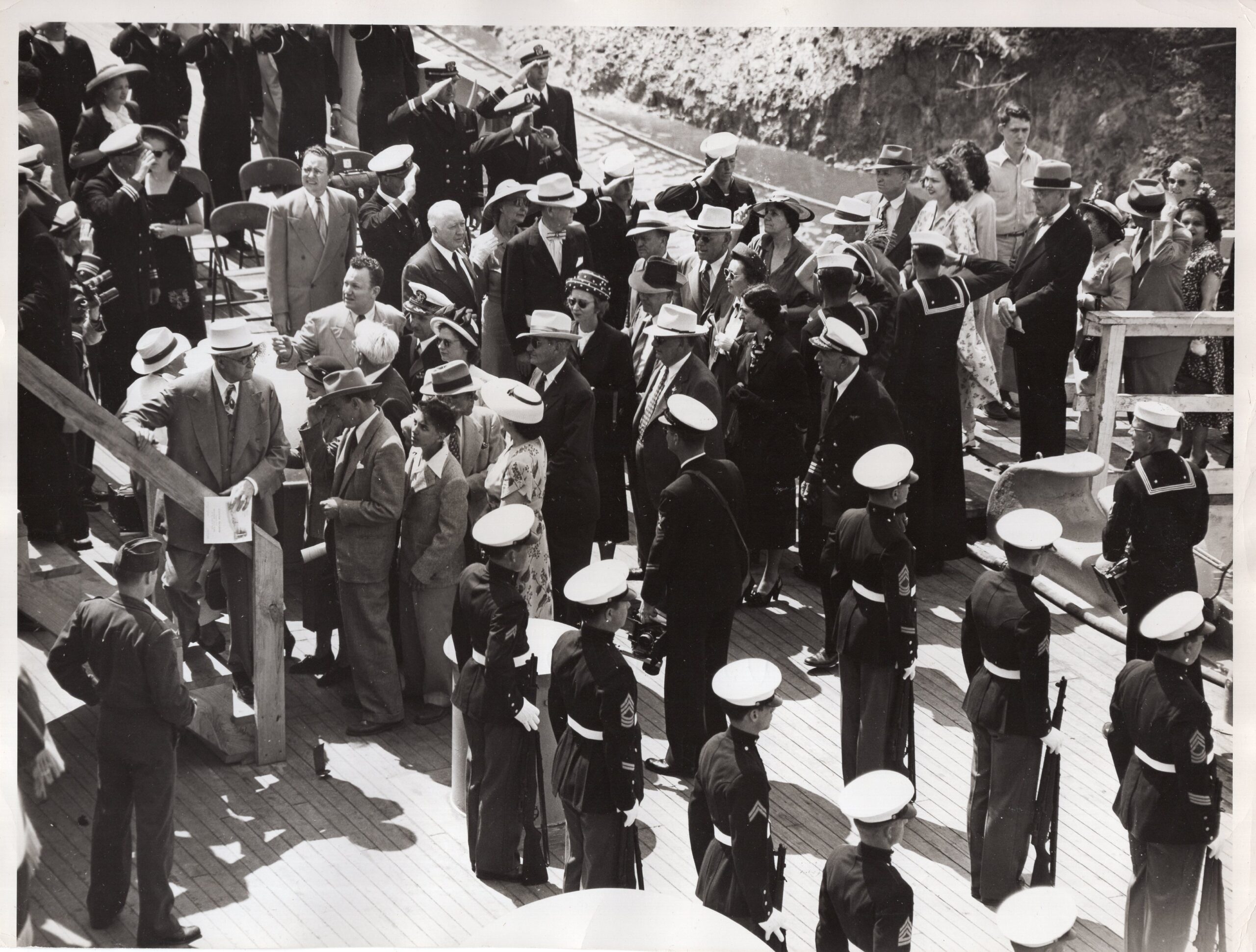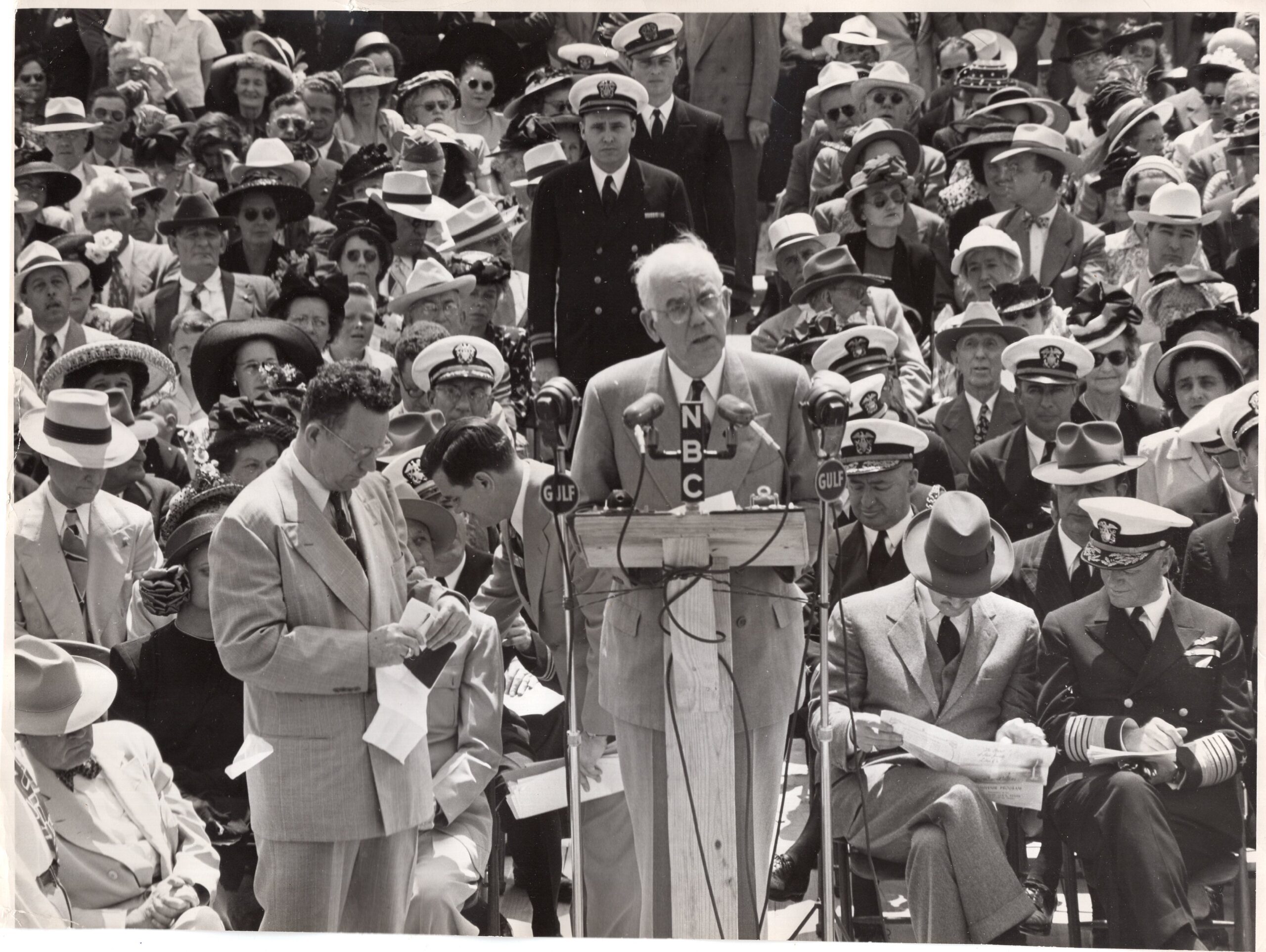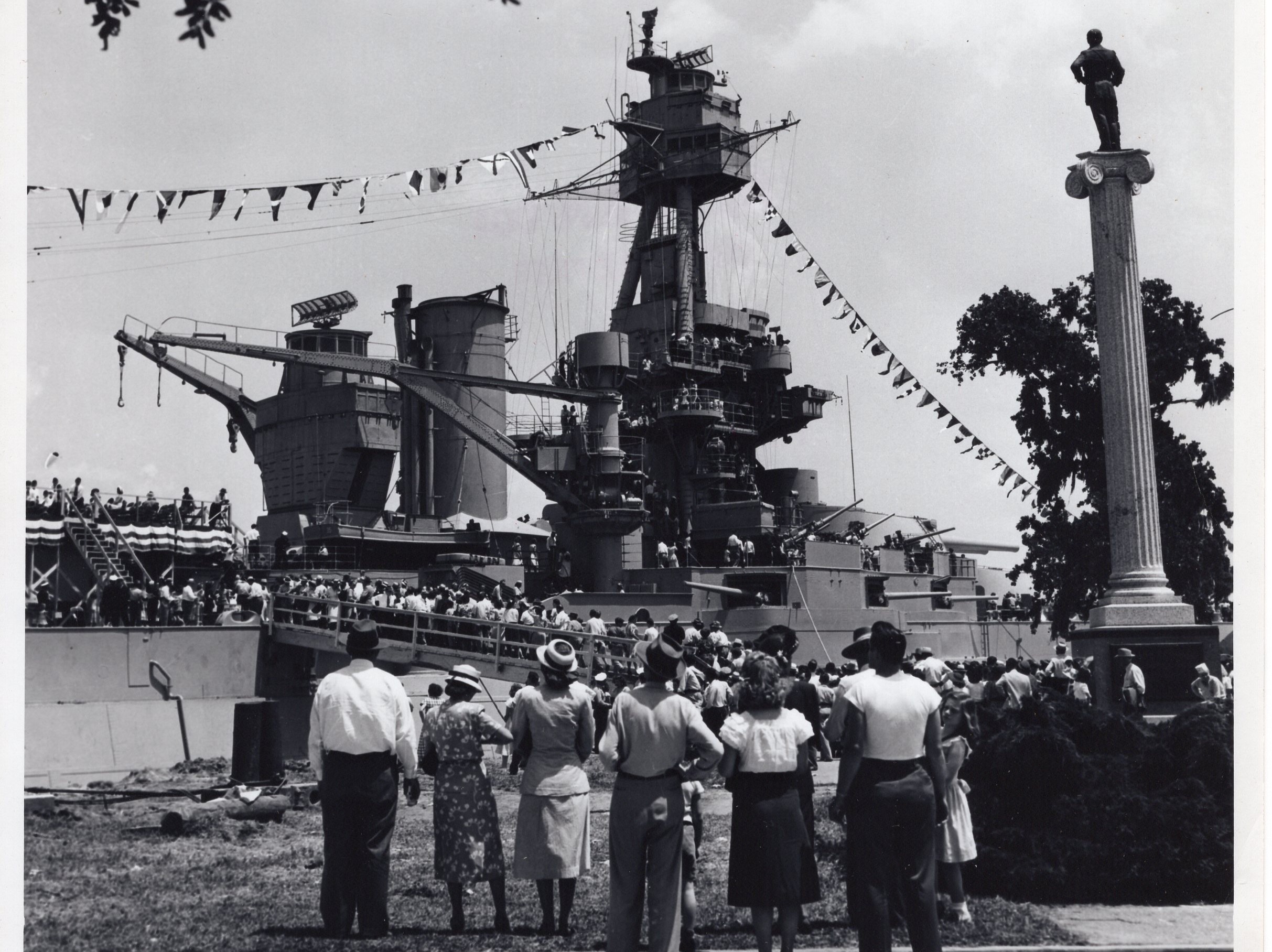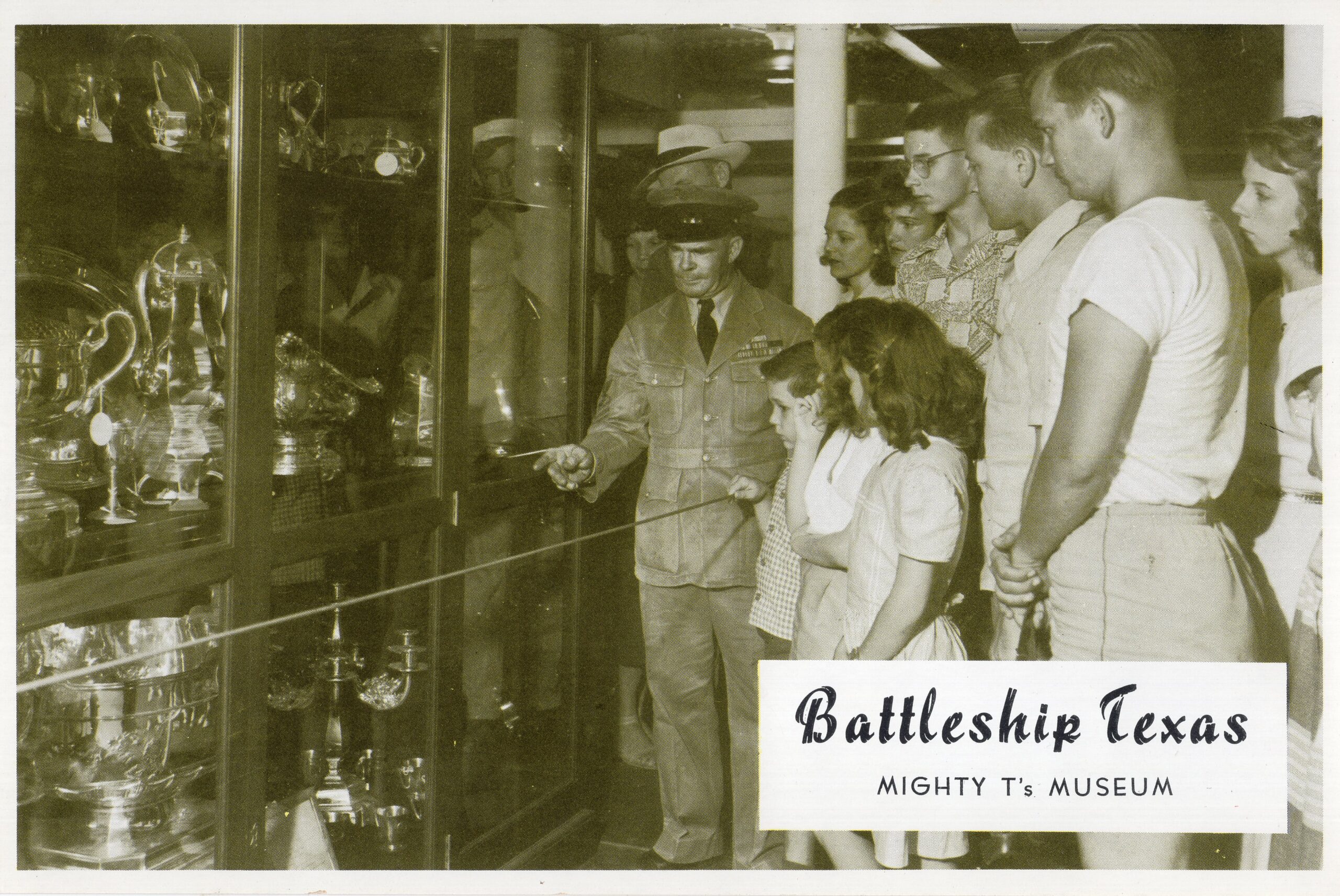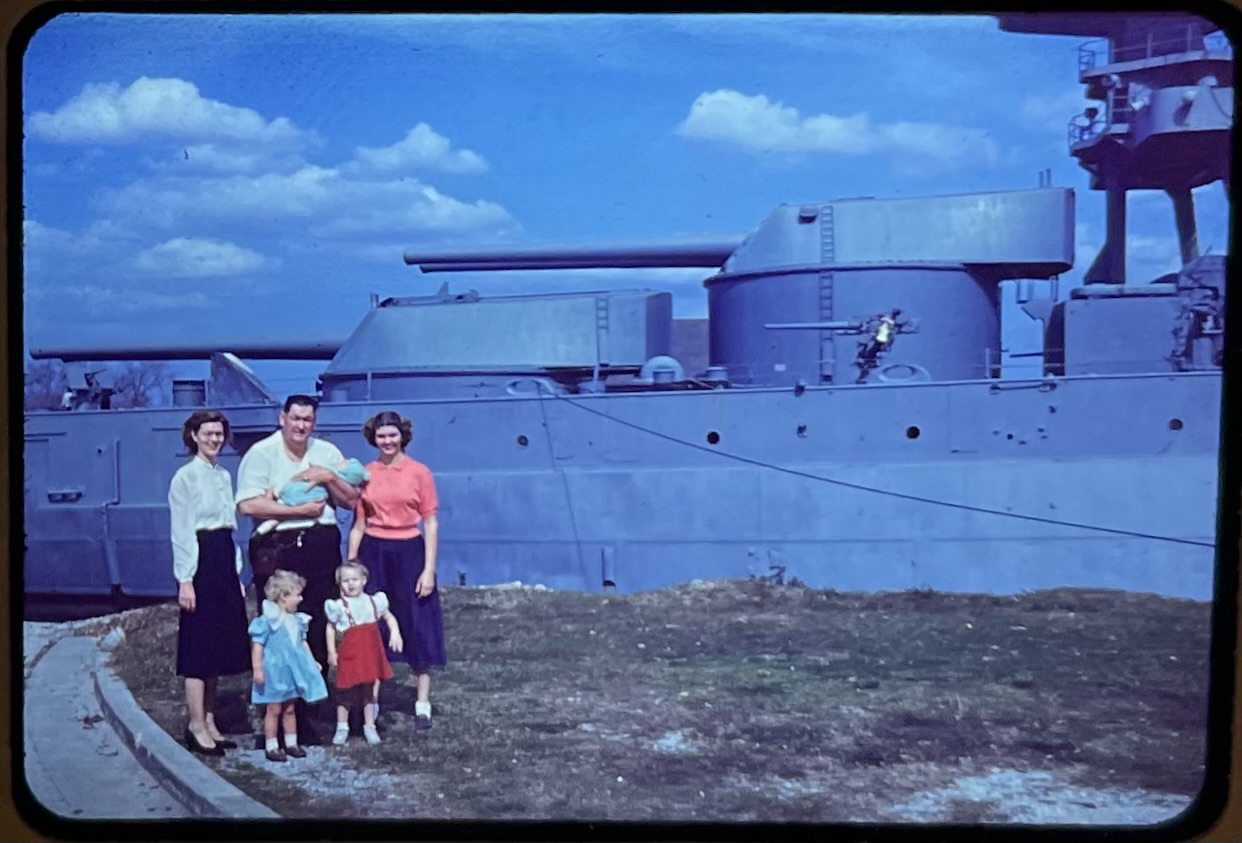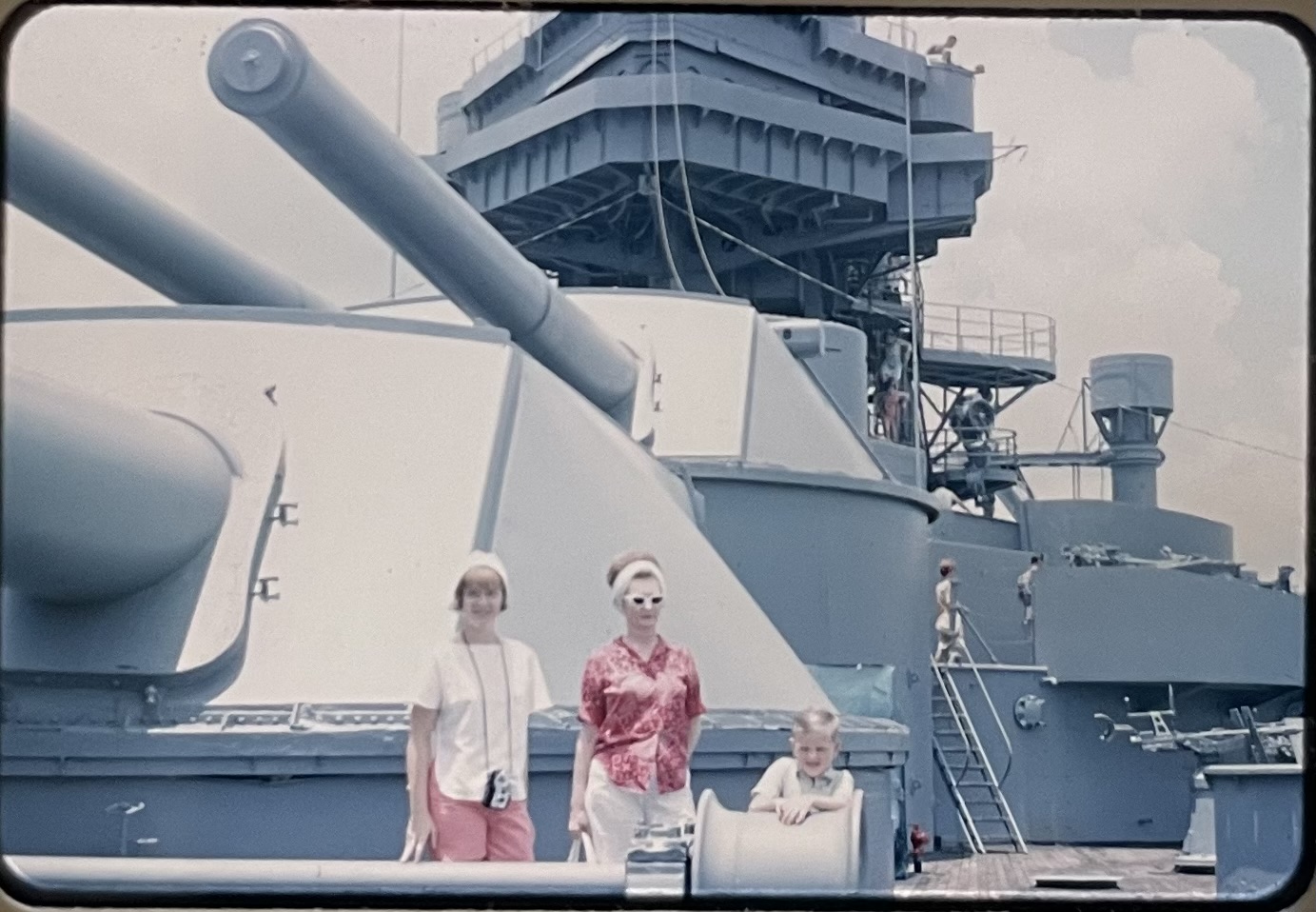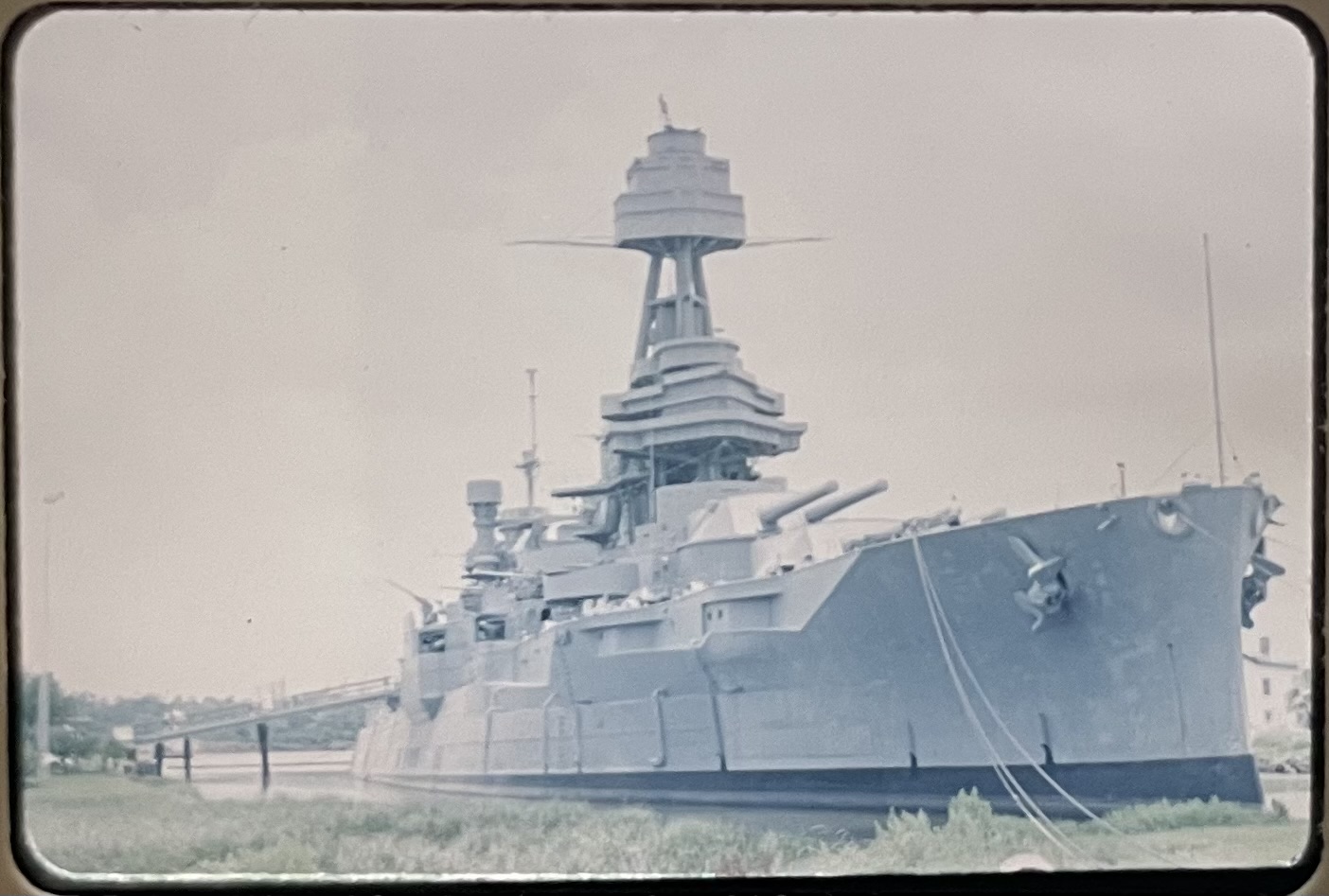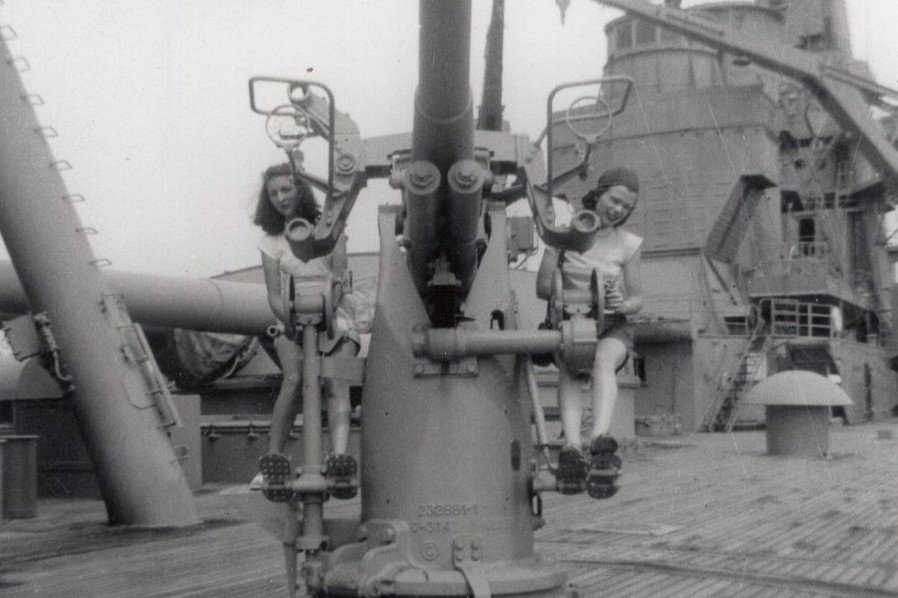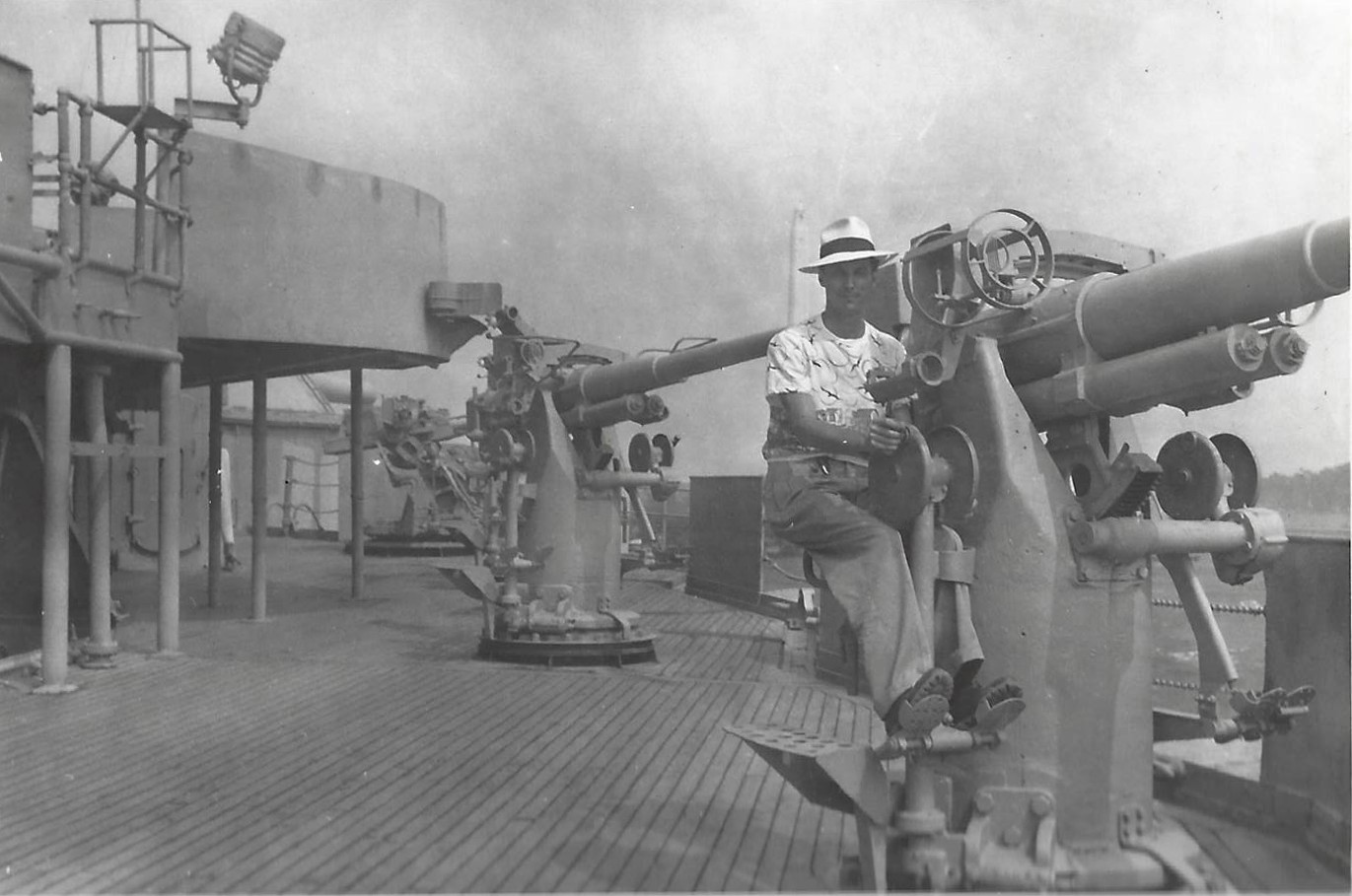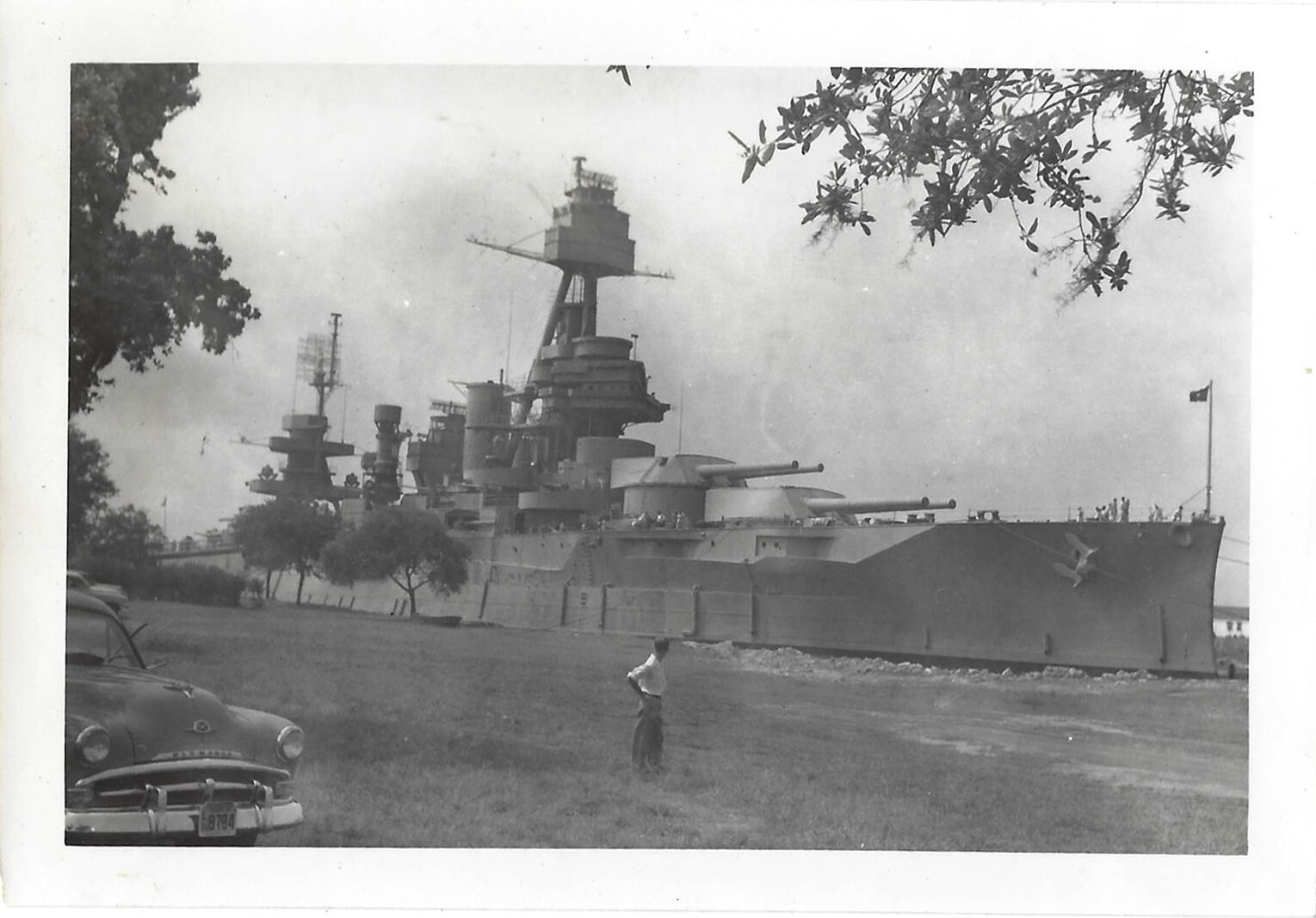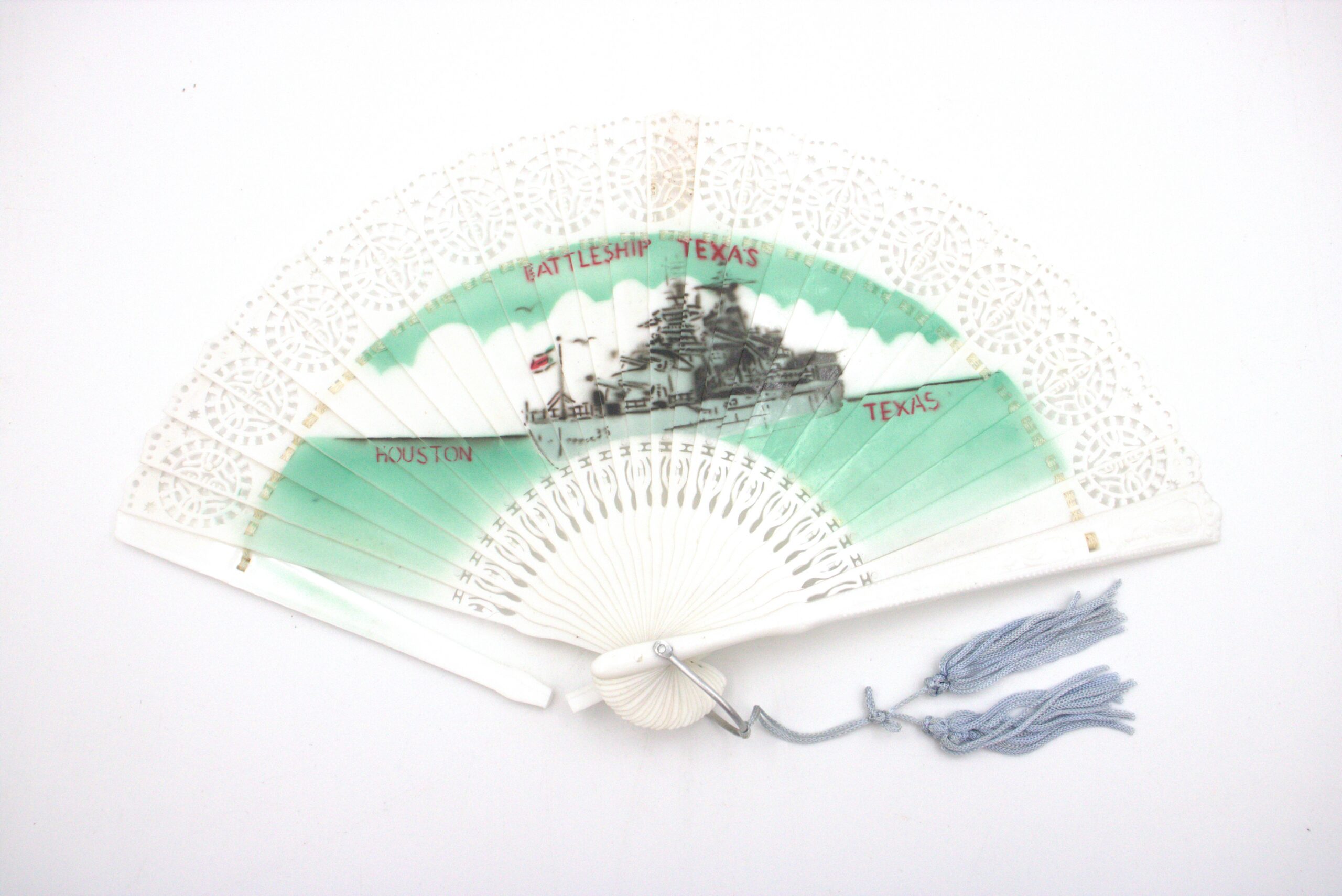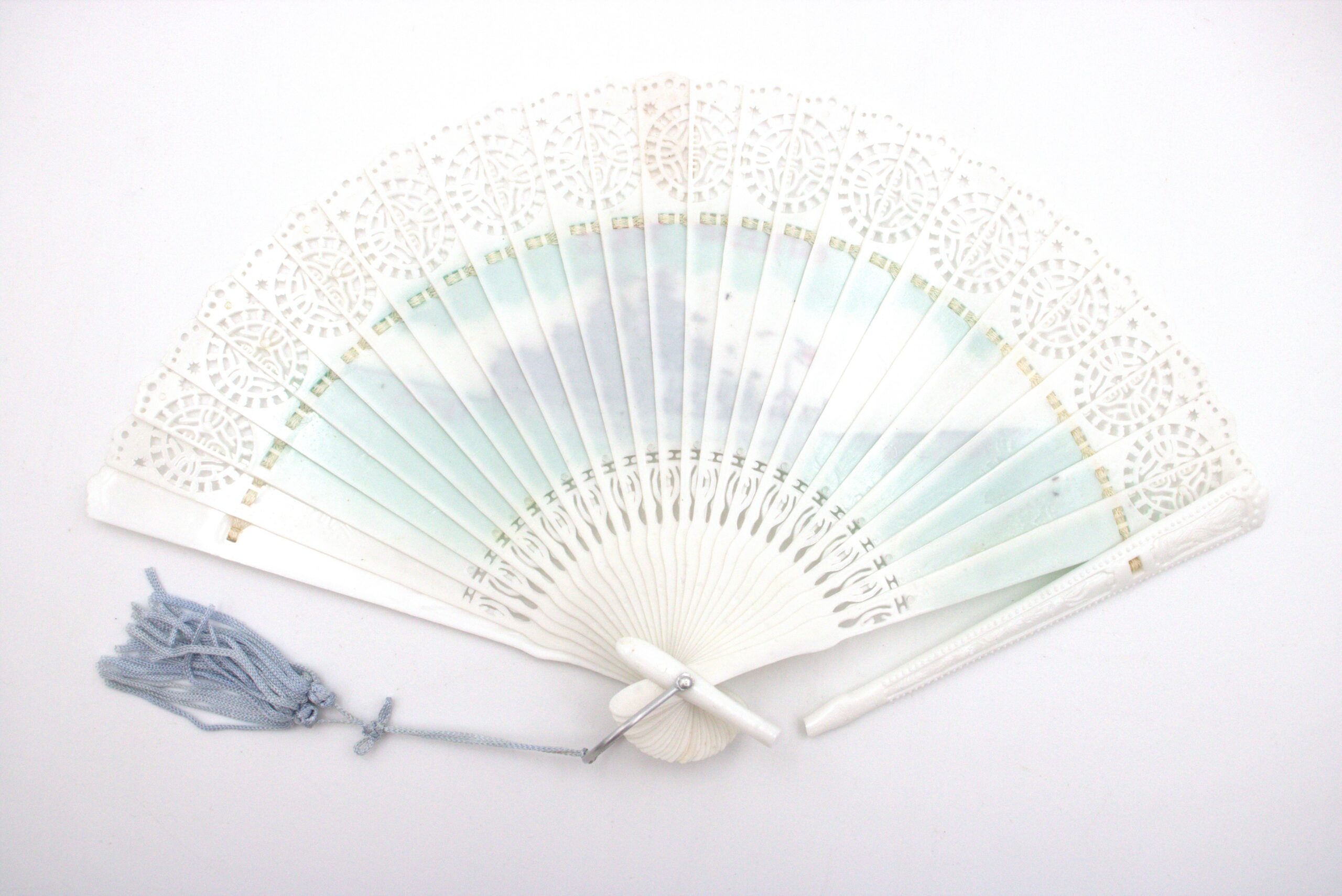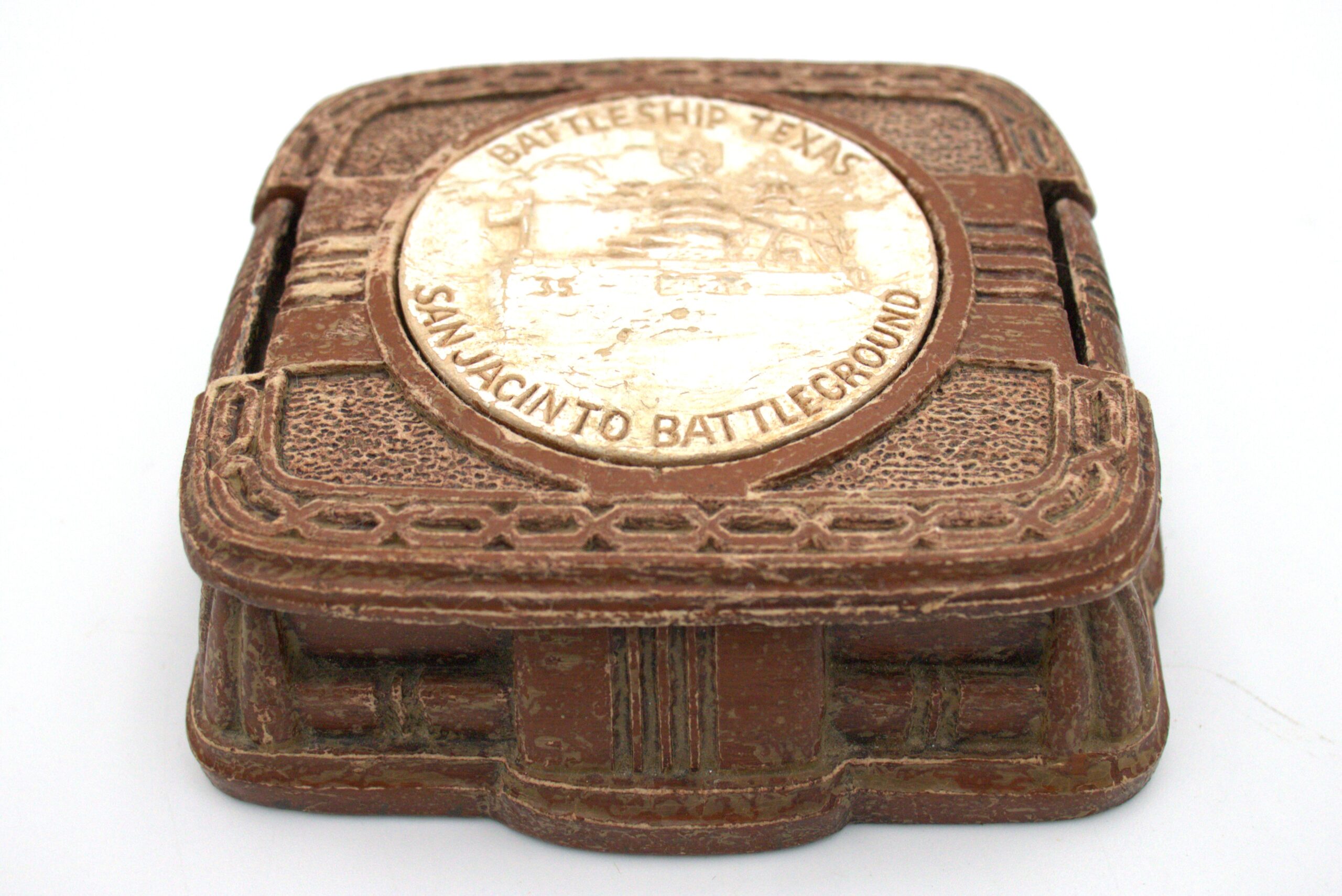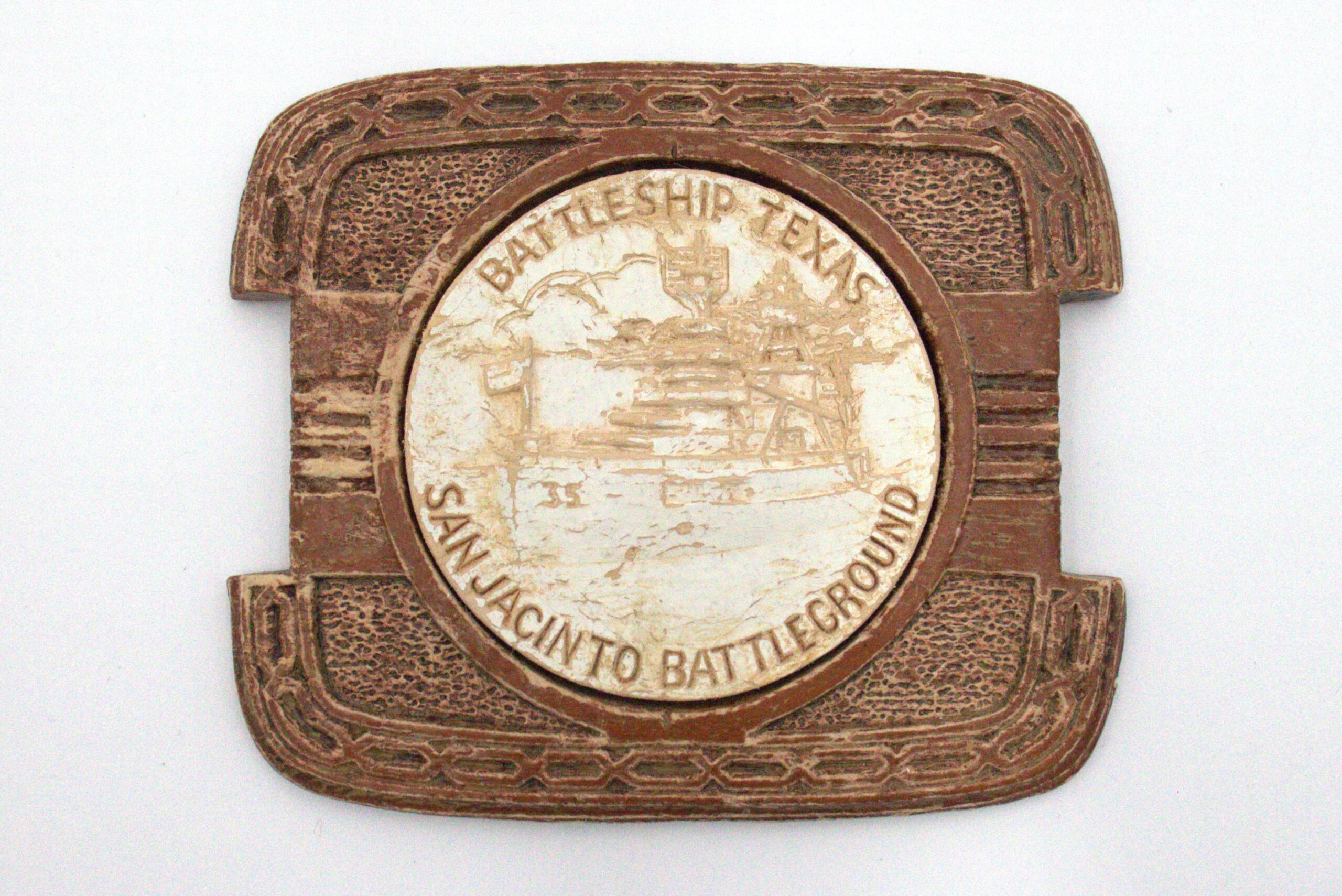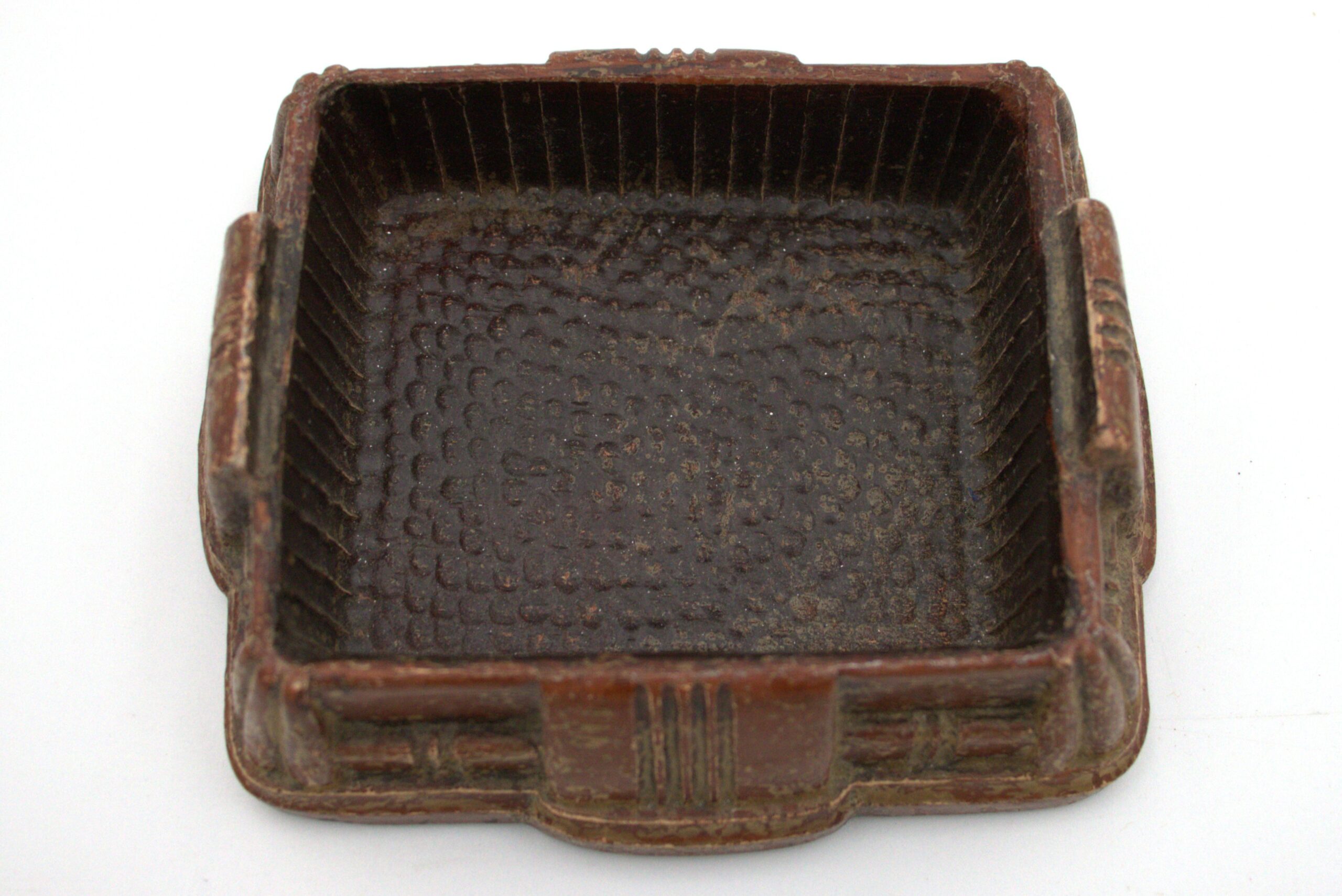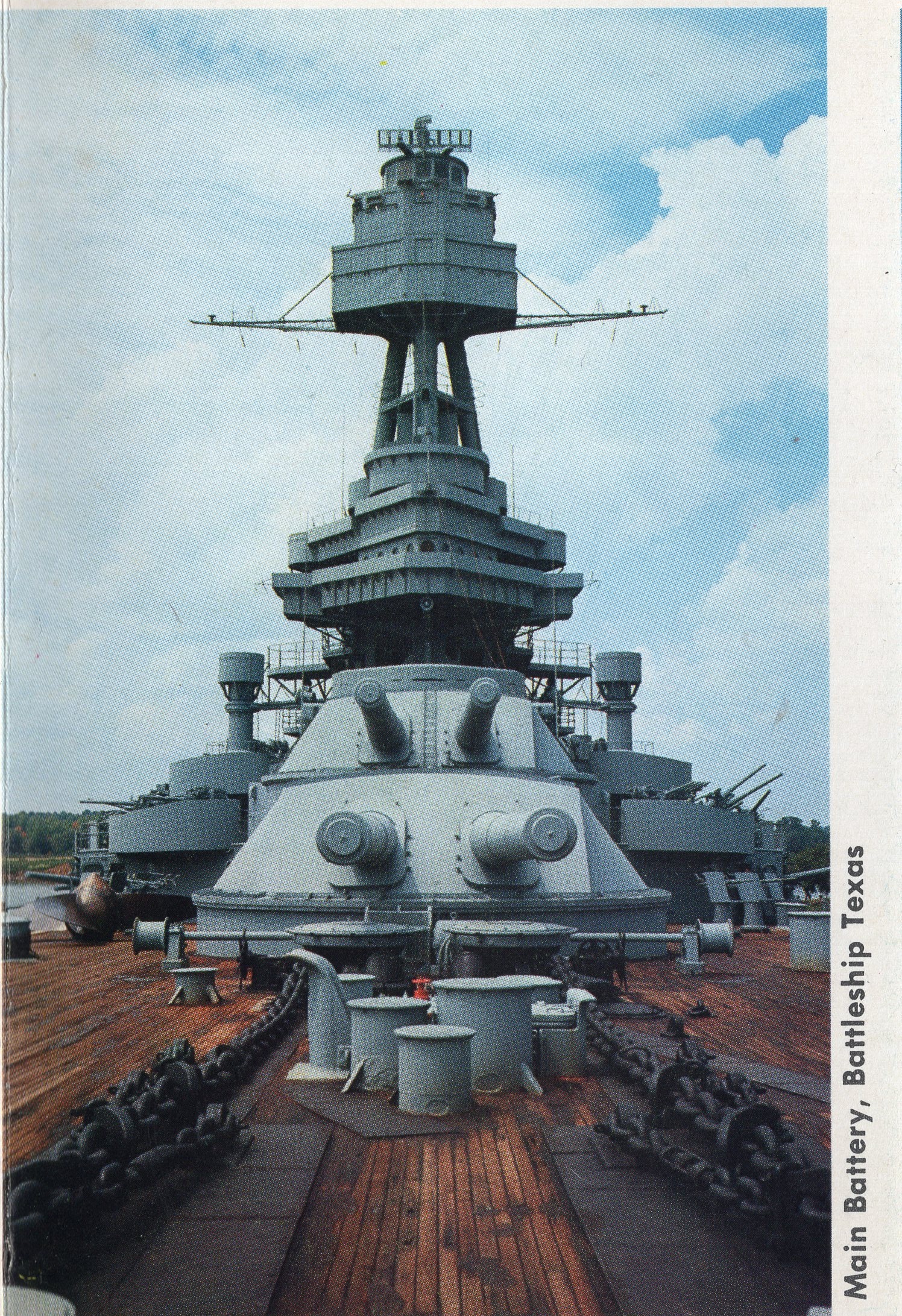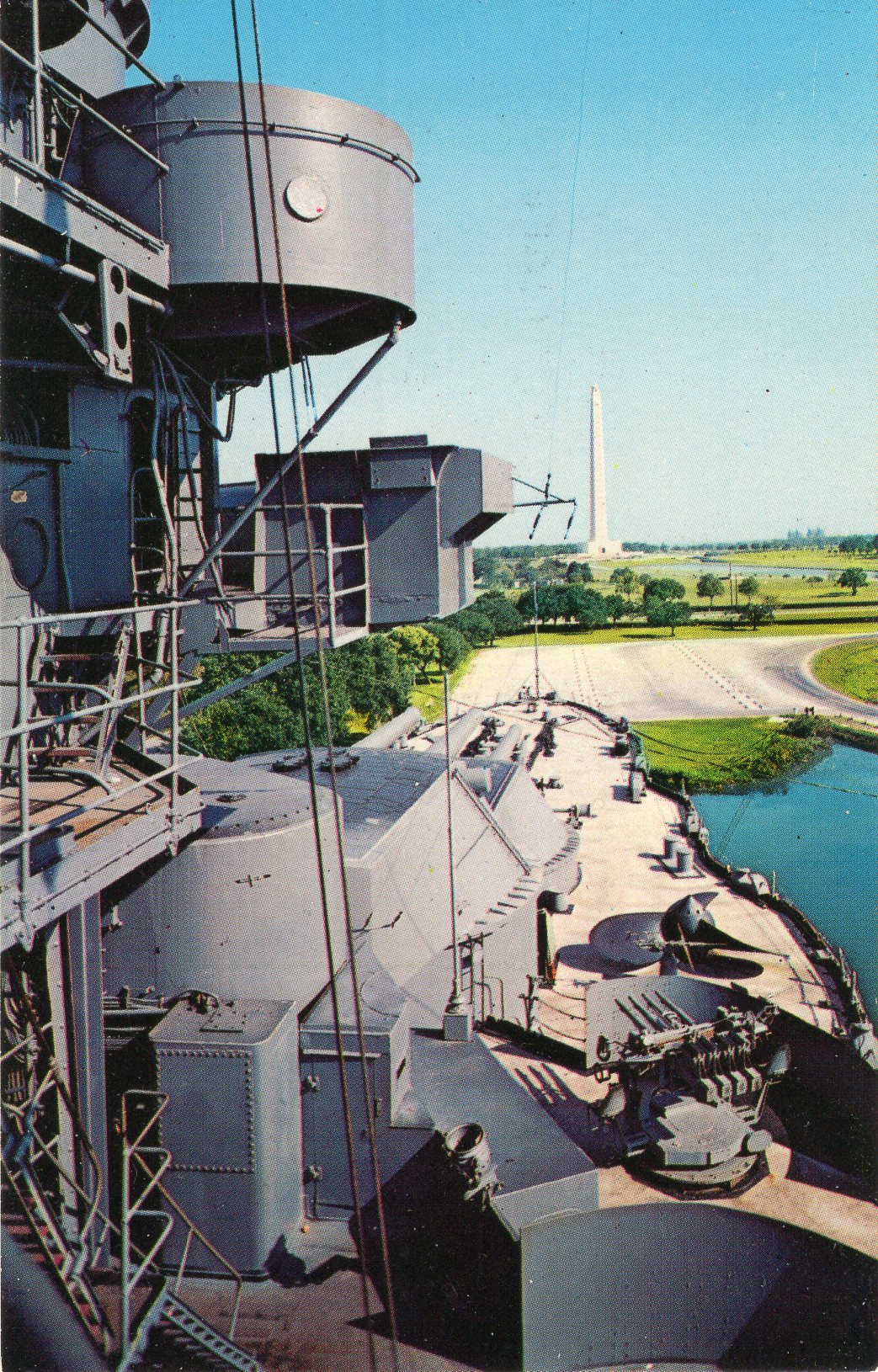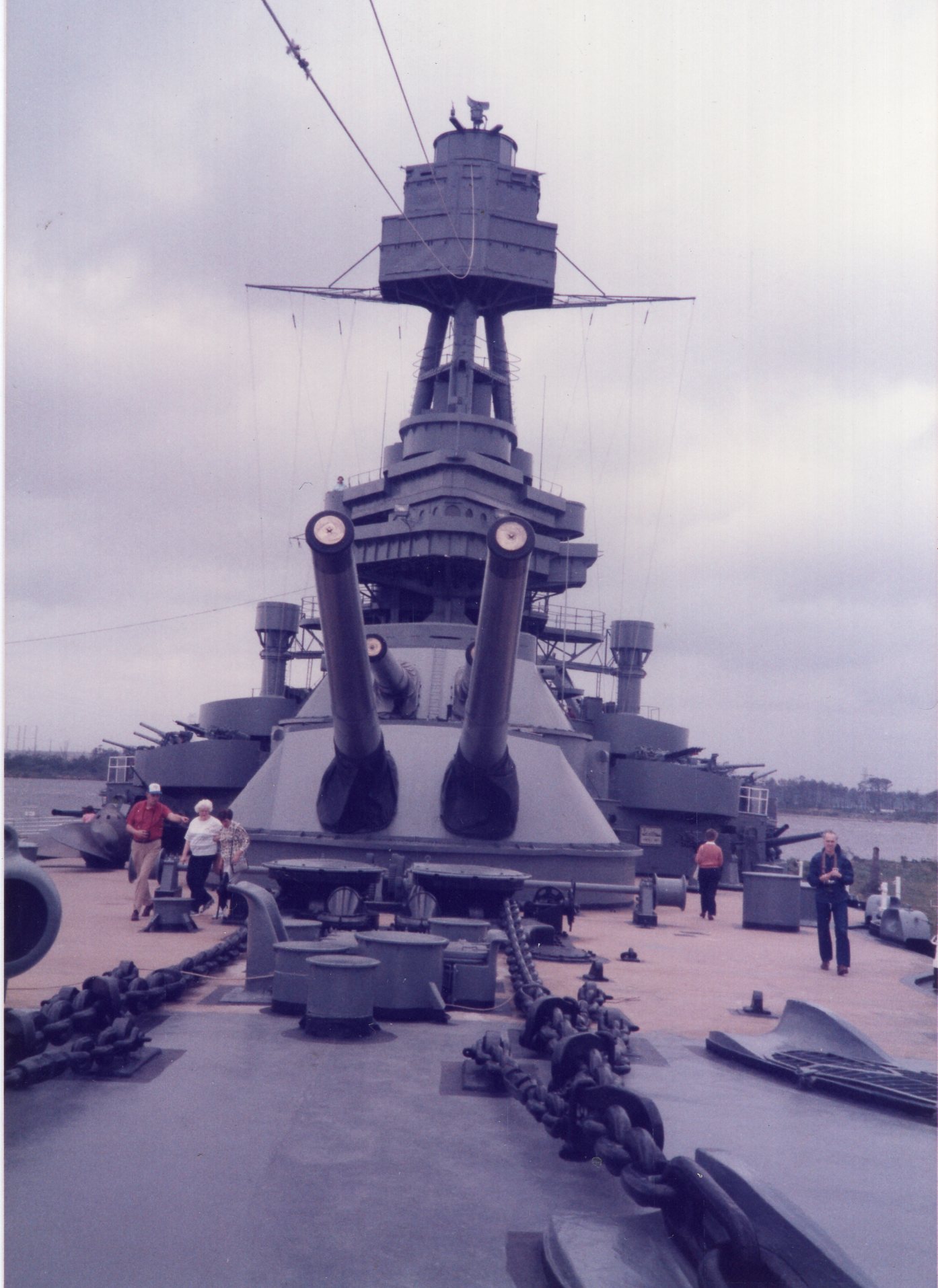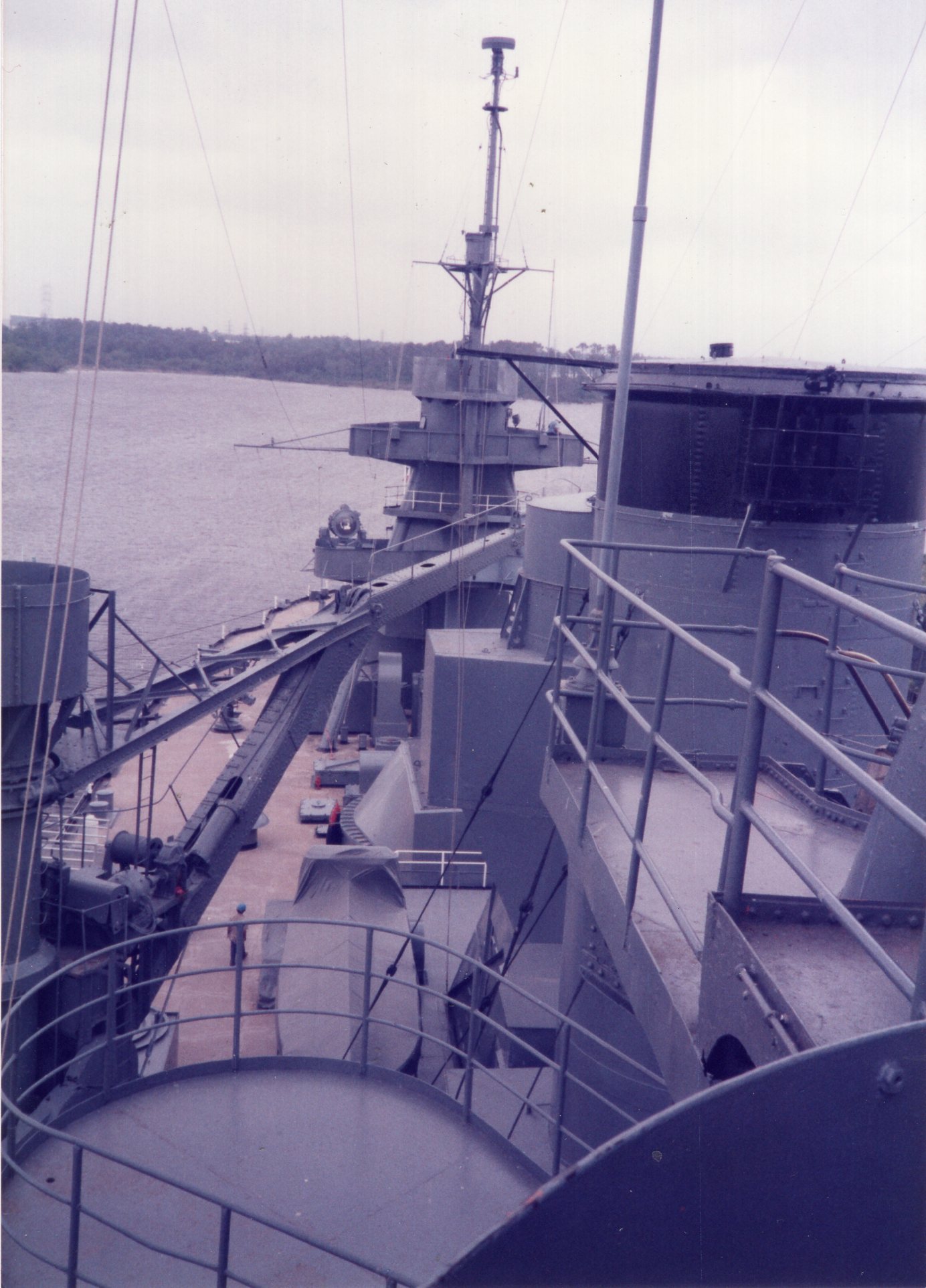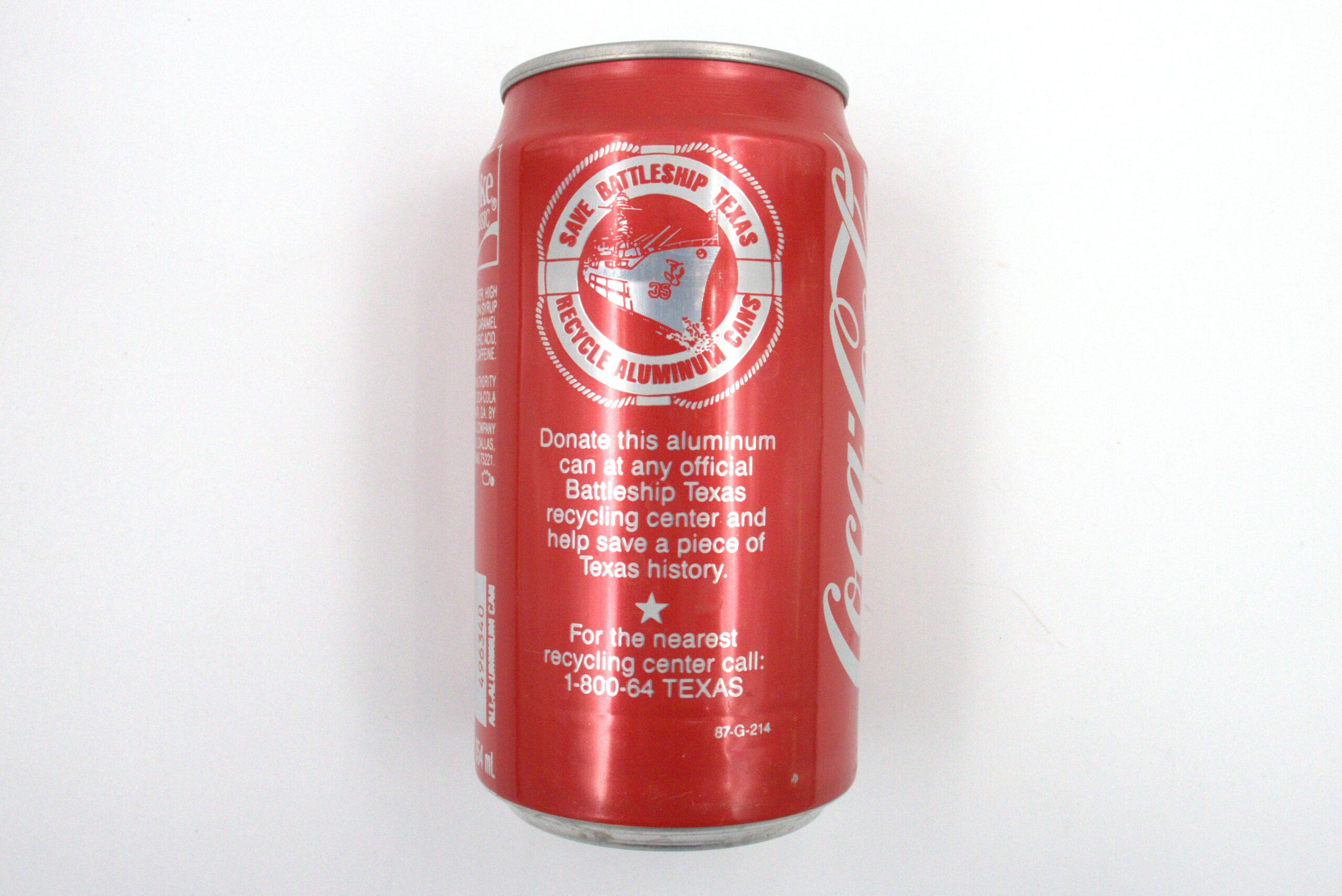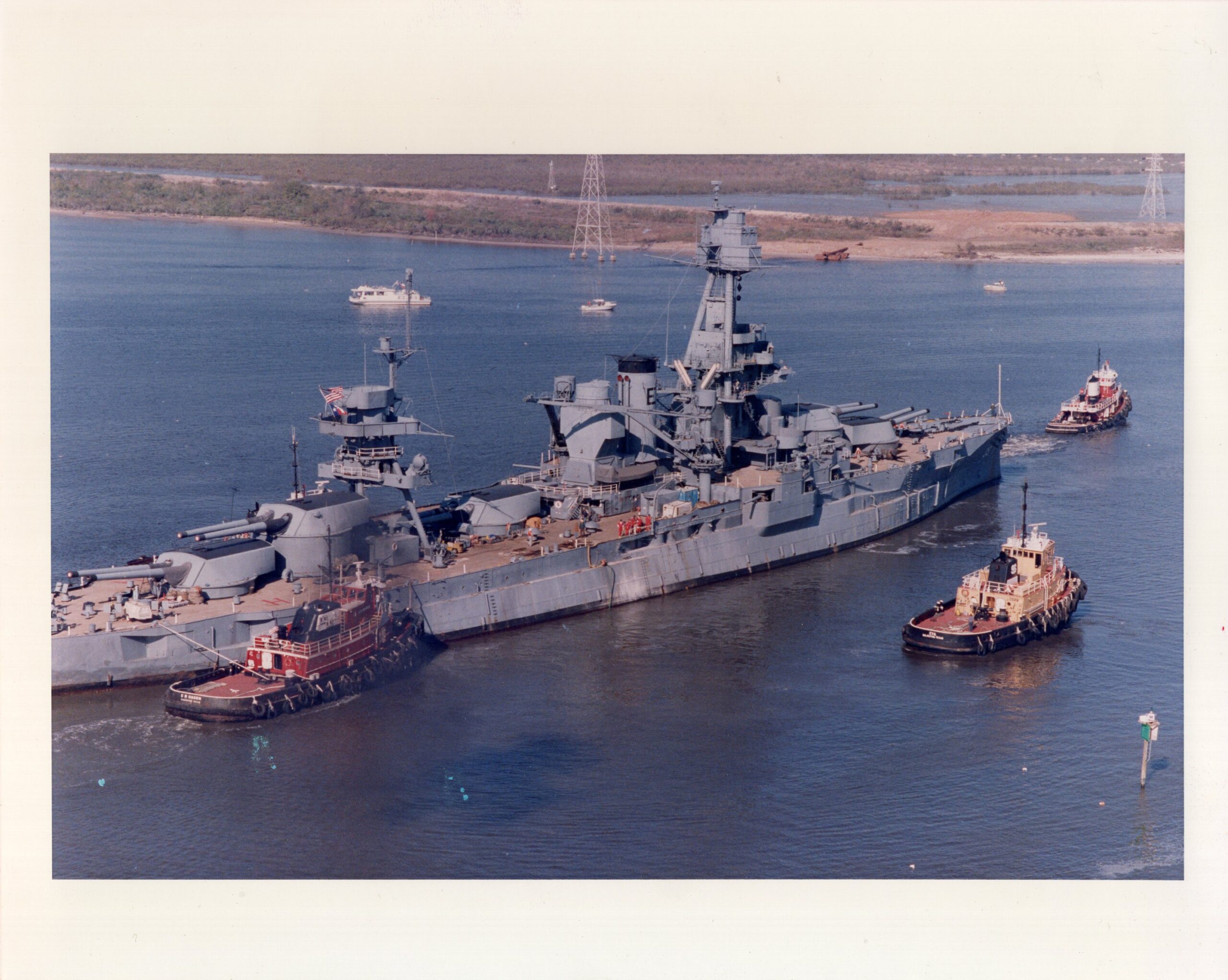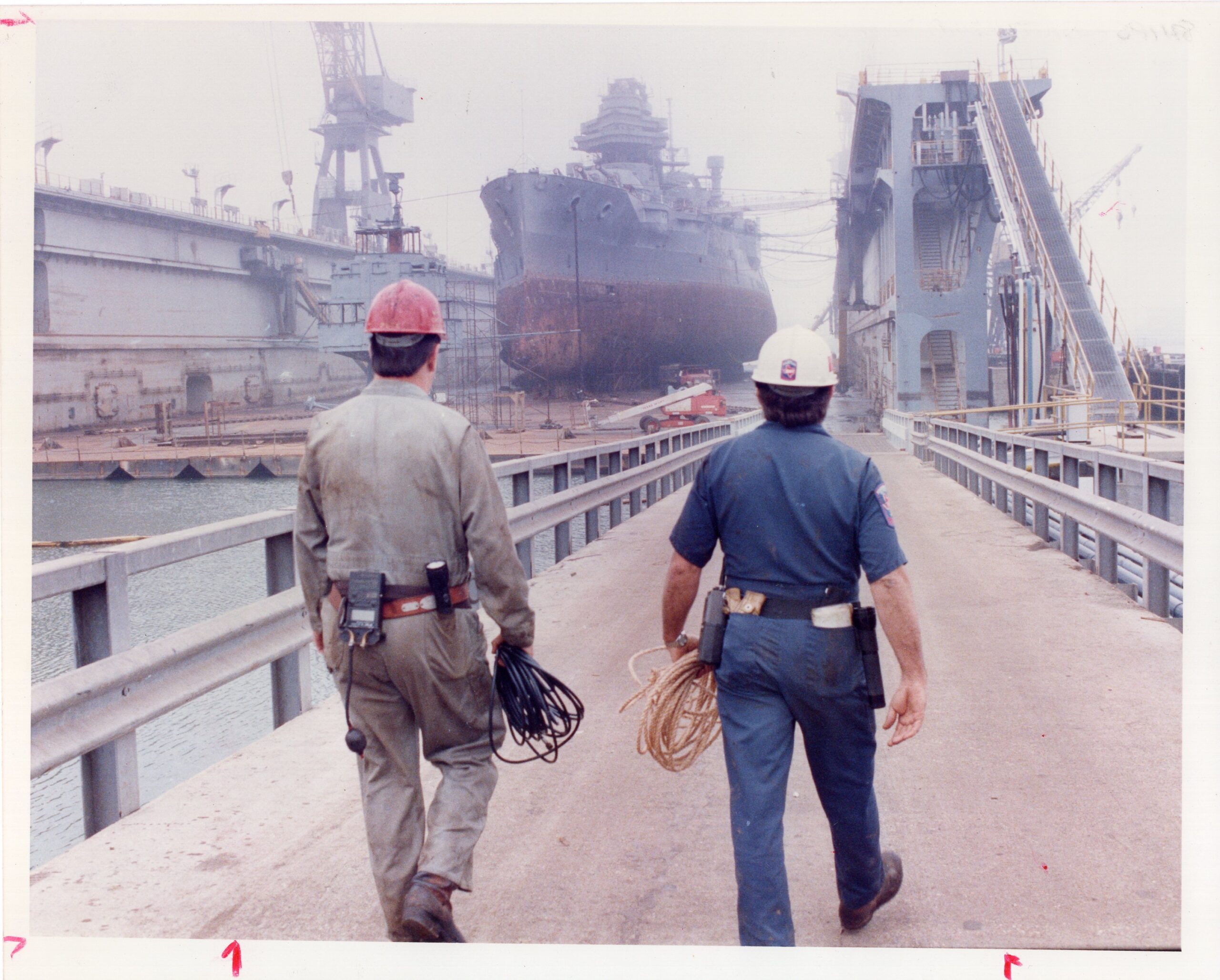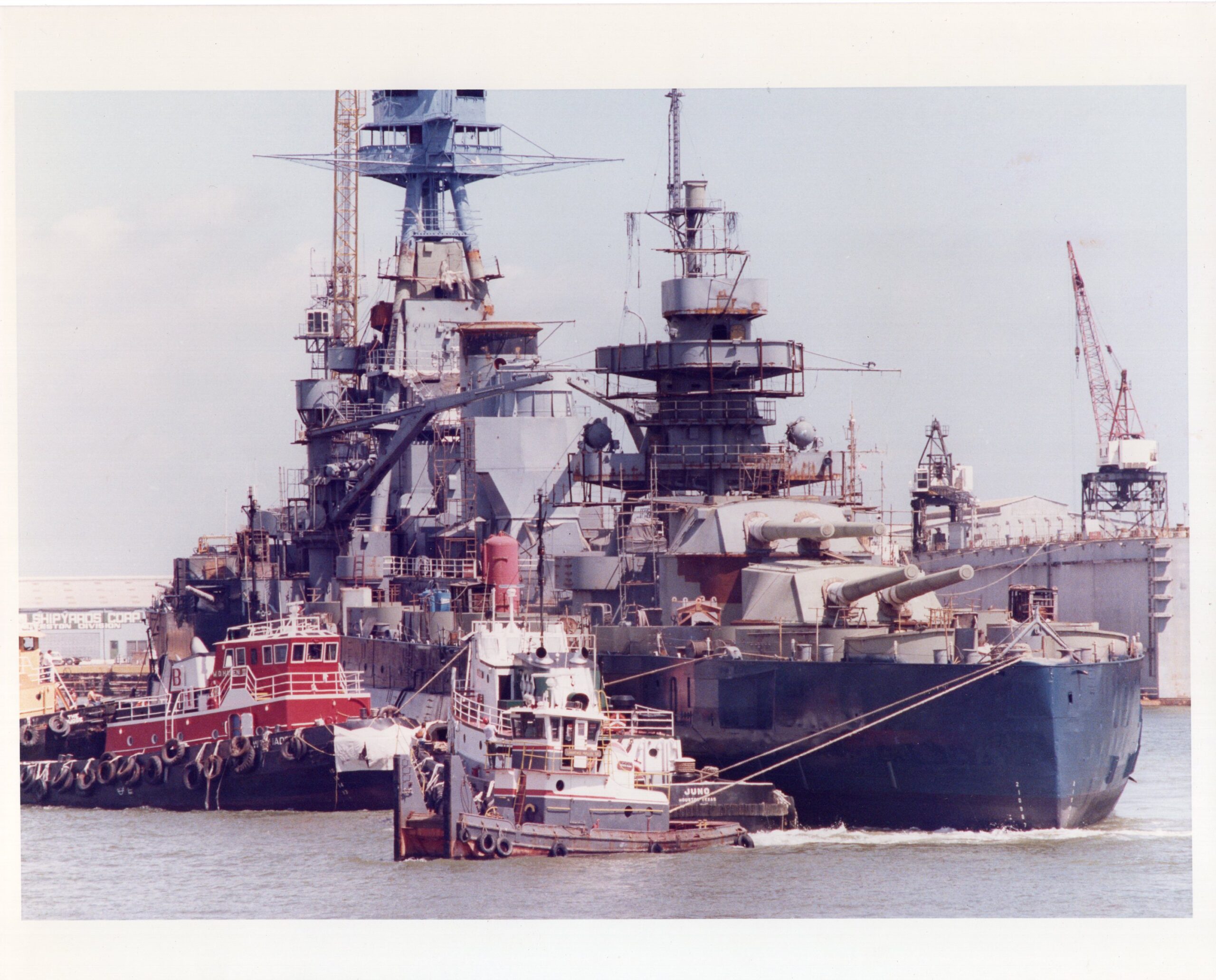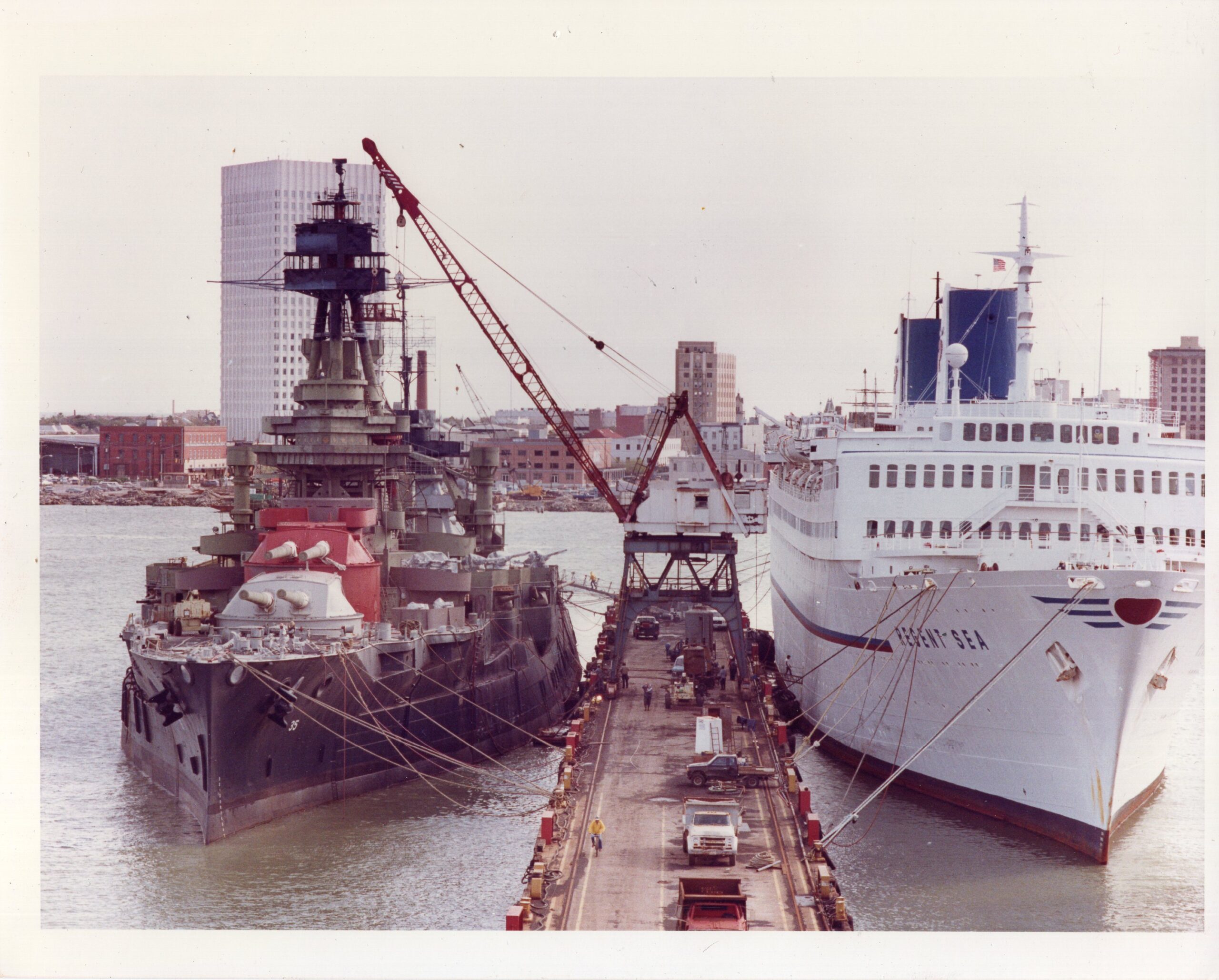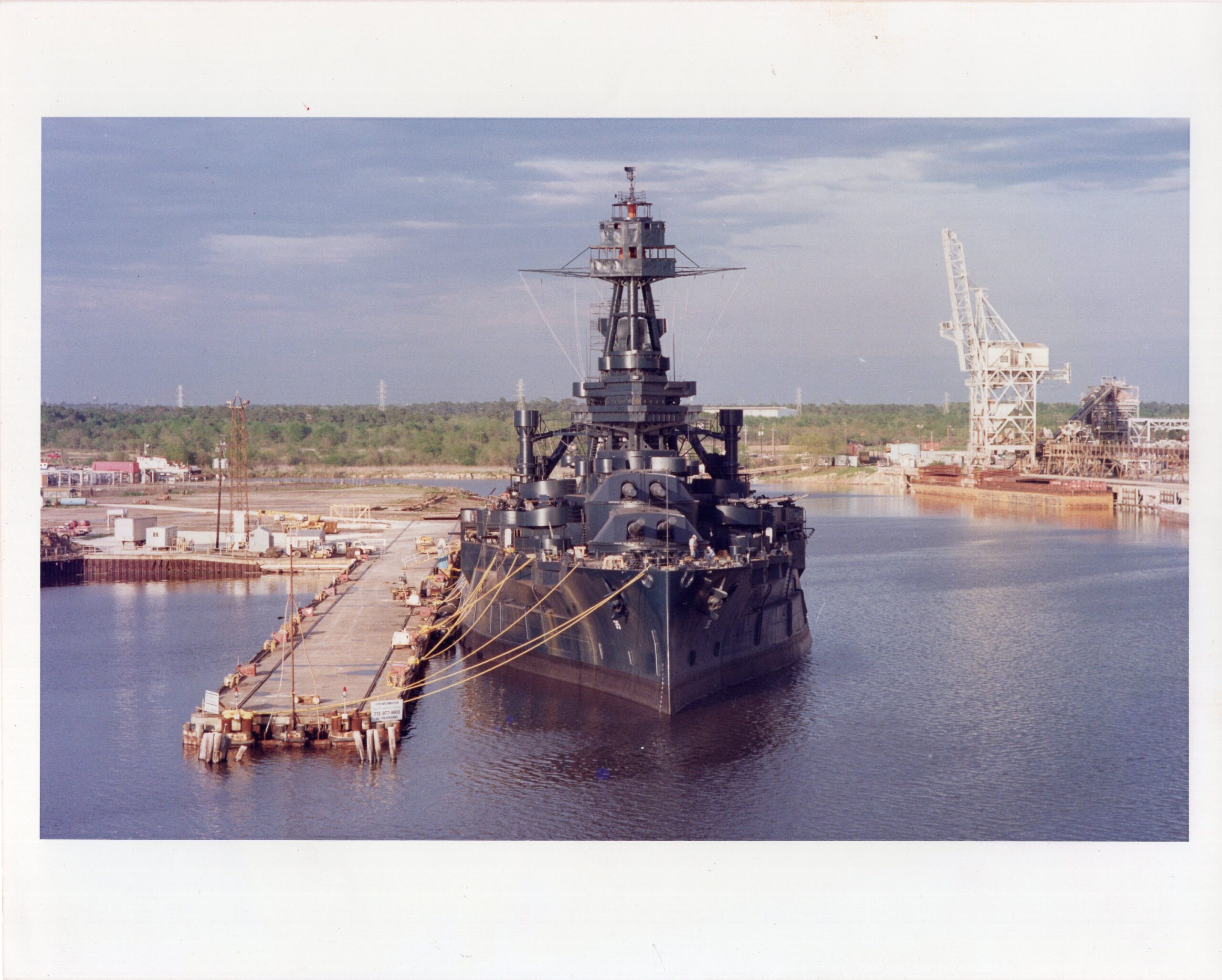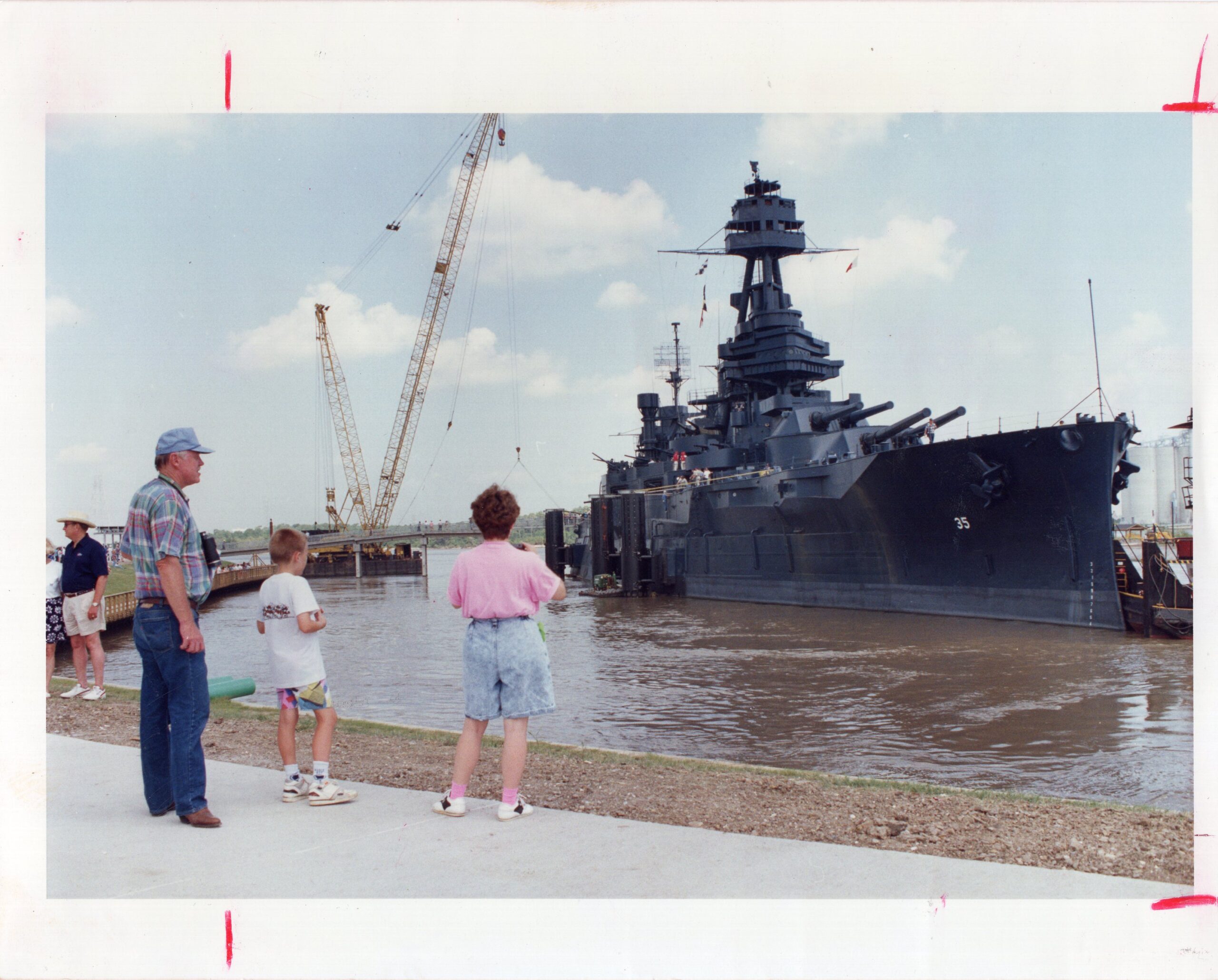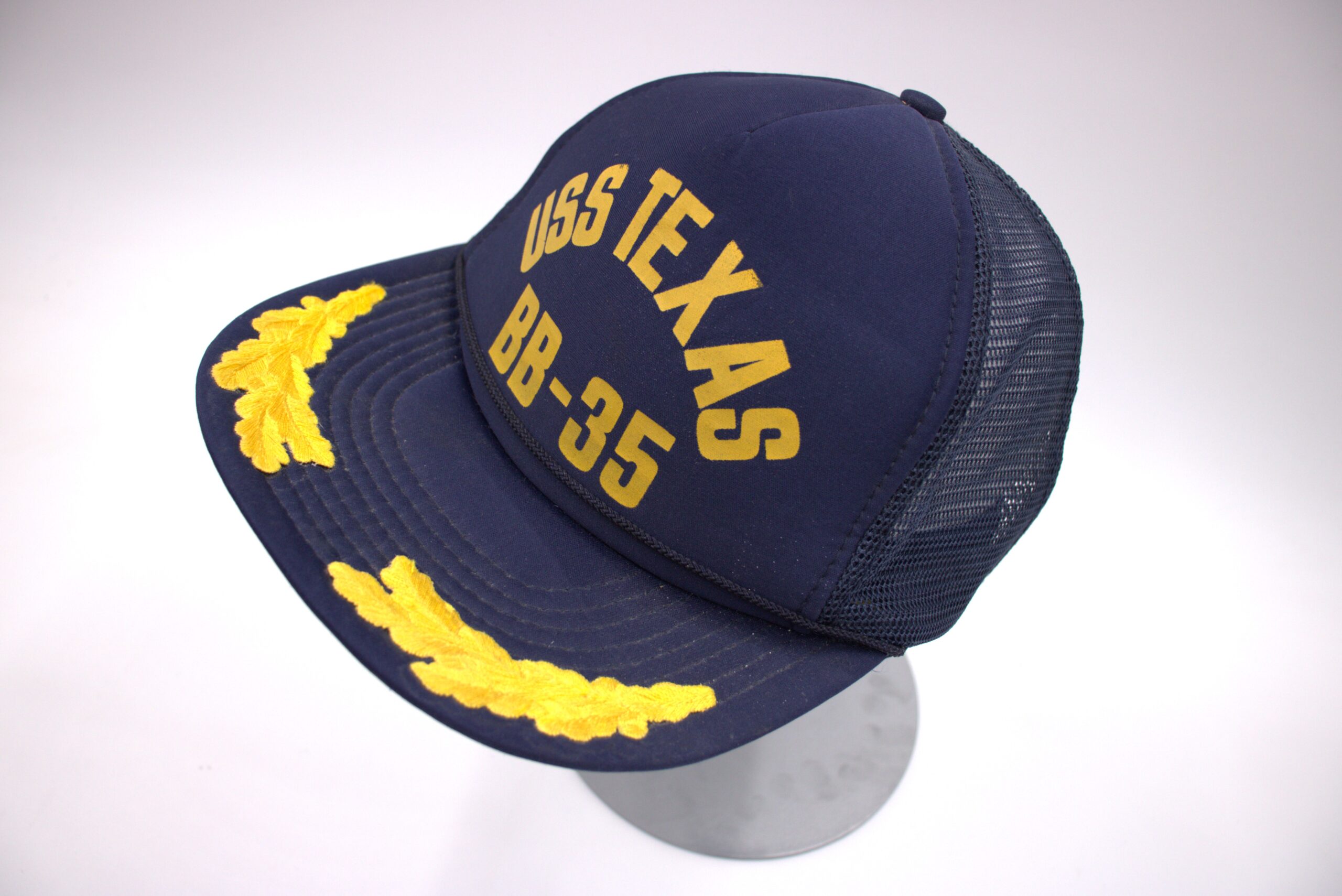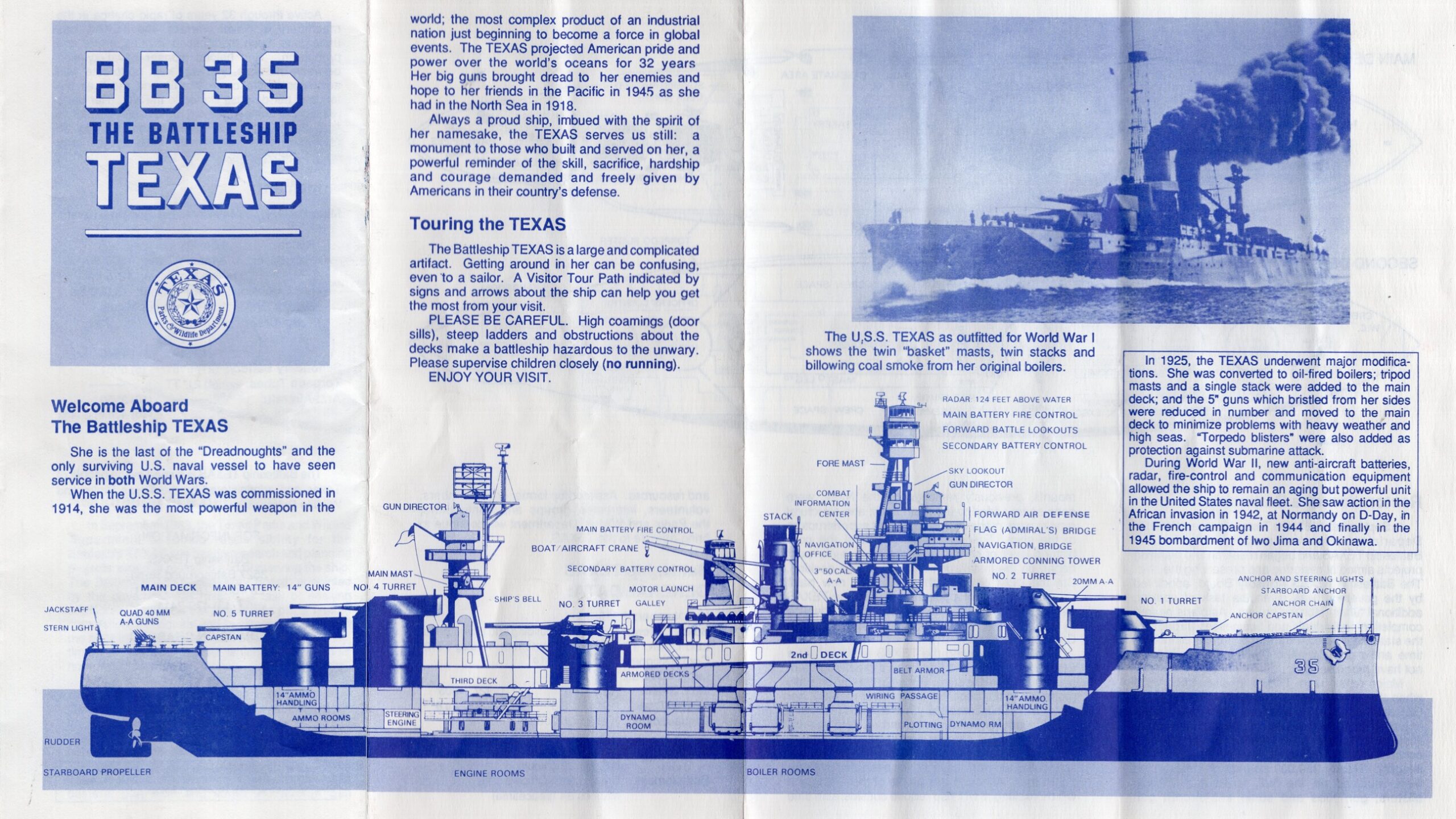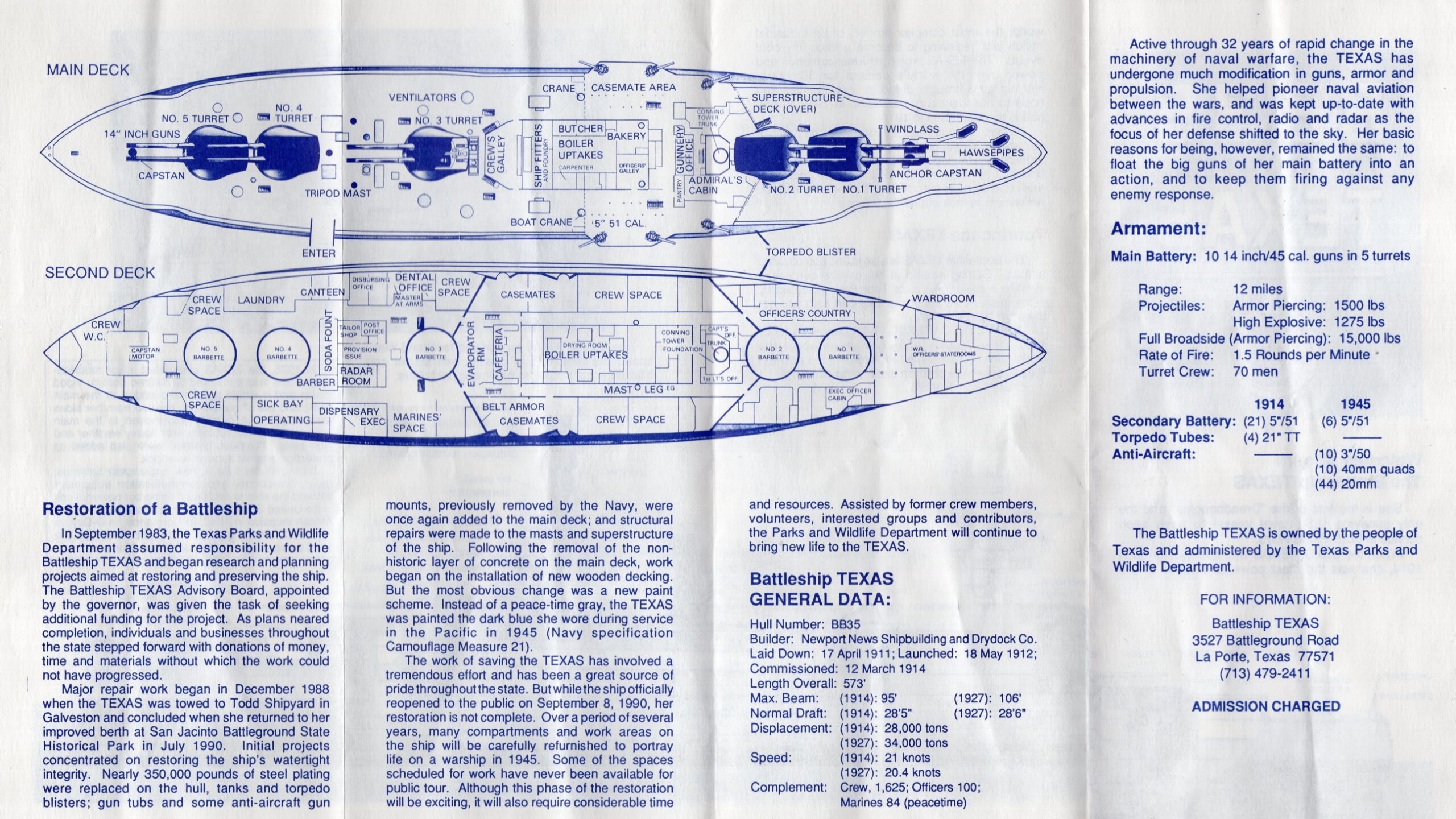Artifact Highlight: Museum Era
Posted by James Burke on September 25, 2025
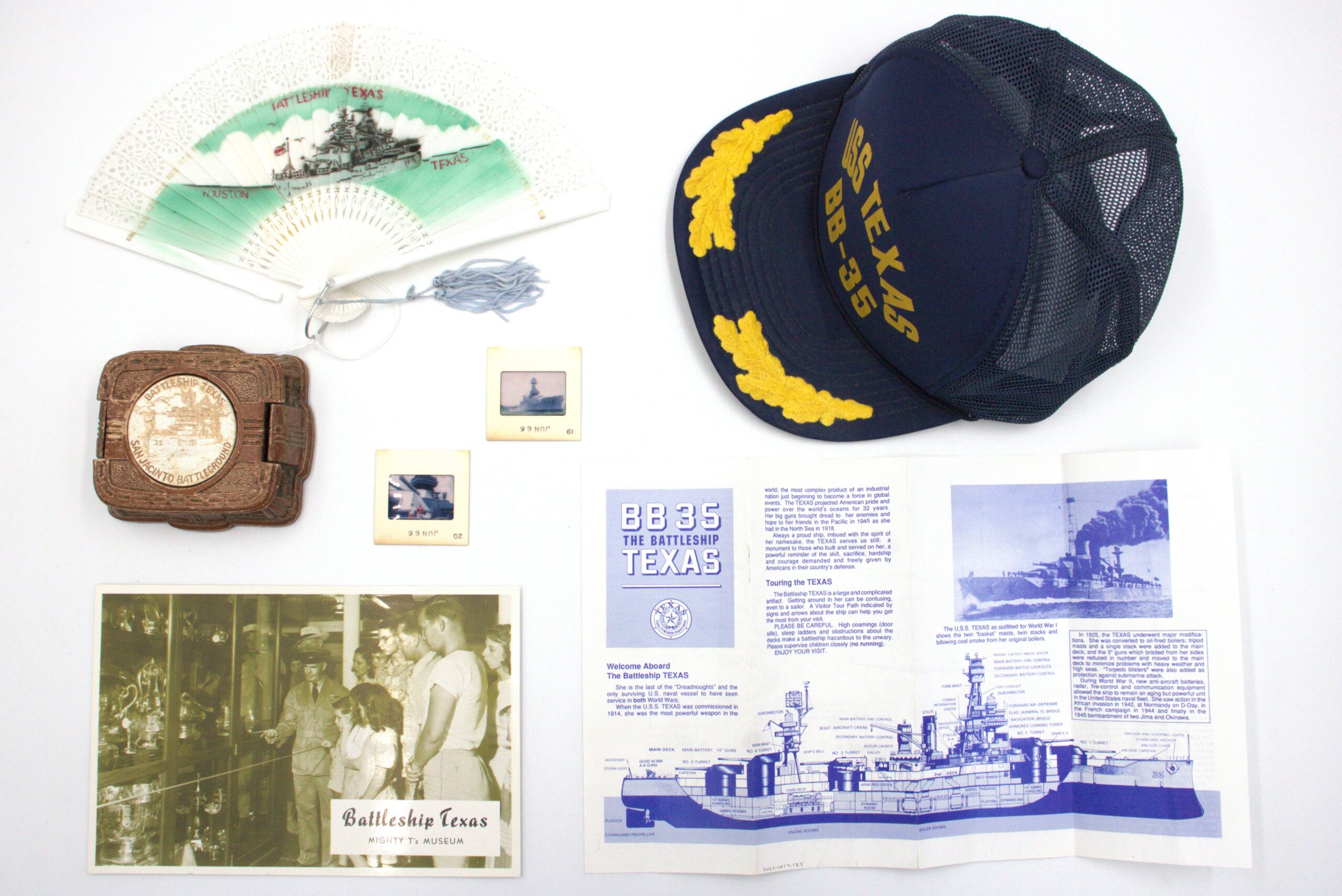
Battleship Texas has a storied history across her thirty-four years of service from 1914 to 1948. Despite that longevity, she has spent more time as a museum than she did in commission. Beginning in January 1946, Texas sailed to the east coast and began preparation for deactivation and donation to the State of Texas. More than two years later, the Navy towed Texas up the Houston Ship Channel where she was decommissioned at a slip in San Jacinto State Park on April 21, 1948. While older ships exist as museums across the United States — such as Olympia in Philadelphia, Pennsylvania — each transitioned into a museum role after Texas began her tenure at San Jacinto State Park. Battleship Oregon had a brief tenure as a museum from 1925 to 1942, but the State of Oregon donated her back to the Navy during World War II, and she was later scrapped, whereas Texas retains the title of oldest permanent museum ship. Battleship Texas Foundation is dedicated to preserving not only the history of her time in the Navy, but also her time as a museum and collecting artifacts of note throughout her time welcoming visitors from 1948 to present day.
While newspapers and other publications contained press photos with carefully curated camera angles and flattering wide shots, patrons paid no heed. An unfiltered view of the early years at San Jacinto State Park was witnessed through the eyes of the amateur camera lens. Earlier in 2025, a 1950s home video, filmed on 8mm, was donated to the museum. The full runtime is about twelve minutes, with 7:25 to 8:22 featuring the family, whose names are at this point unknown, exploring the deck of Battleship Texas and the surrounding San Jacinto Battleground. The reel itself carries unique challenges in archival storage. As bare hands leave prints, and cotton gloves are abrasive, any handling of the reel itself should be done wearing nitrile gloves. Furthermore, film is best stored at 40 degrees Fahrenheit (about 4.5 degrees Celsius) and forty percent humidity, which means its safest storage — as odd as it may sound — is in a fridge.
Museum goers participated in traditional photography in addition to film. Photographs carry different rules on handling from traditional paper. Nitrile gloves protect against fingerprints on the surface just as it does on 8mm. Traditional printed photographs are easier to archive due to their flat shape, but as the home movie proved, photography alone was not the sole method for moment capture. Battleship Texas received several 35mm slides, hundreds of which are preserved by Texas Parks and Wildlife Department, but these new donations were from the patrons who visited the museum, rather than TPWD’s cost effective method of photograph storage. The first shows a family near the entrance in 1950, and a pair of others showing a group perusing the deck in 1966. While the photography is distinct, and some archival techniques can differ, preservation methods remain the same. For general maintenance, keep the slides in a cool dry area, in an aid-free folder or polyester sleeve, and placed in archival boxes.
Photographs were not the only keepsakes collected by visitors. Memorabilia and ephemera, just as film and photograph, have made their way to Battleship Texas Foundation largely through donations of museum goers past and present. The first souvenir in collection is a simple plastic fan with a print of Battleship Texas on the face, dating between the late 1940s to the 1960s. Likewise present is a cigarette box adorned with a decorated puck on the lid. This was also a mass-produced object common in American landmarks throughout the 1960s where the puck offered the only variation. Some other examples of this have built-in ash trays. Storage for both is simple enough, although the box’s use of water-soluble paint makes a dry environment all the more necessary. Both pieces should be stored in boxes using archival paper for cushioning.
In the 1960s, The Battleship Texas Commission removed the ship’s original longleaf pine decking, and replaced it with concrete. While meant as a measure to ensure longevity, the acidic nature of the material proved more corrosive than beneficial. Nonetheless, many of the most iconic shots of Battleship Texas, taken by press and patrons, come from this period of preservation experimentation. Publications also saw widespread success, as many of these images made their way into popular pieces read by museum attendees and nationwide. A magazine owned by Peter Fiedler, the first captain of the guided-missile cruiser USS Texas (CGN-39), contained an article on the museum Texas, alongside the modern Texas, recently commissioned. Photograph and magazine both need storage in acid-free folders to preserve their quality.
Walking on her main deck one sees an array of weapons. They are long since obsolete, but it was with these guns that Texas helped defeat the enemy in two world wars. Just as a woman exhibits her diamonds and other jewelry, so this “lady” shows off her most precious gems—her big guns—to thousands of tourists.Chaplain M. Terry Hall in “USS Texas Museum” in All Hands magazine Nov 1977
By the late 1980s, Battleship Texas had welcomed guests for four decades. While commissioned in the Navy she received regular time in ship yards and dry docks, she did not have access to such luxuries as a museum ship. Of the many methods to raise funds, Texas Parks and Wildlife Department partnered with Coca-Cola to raise funds through recycling of soda cans. Coke cans carried the message, “Donate this aluminum can at any official Battleship Texas recycling center and help save a piece of Texas history.” Aluminum does not visibly rust in humid environments like steel, nor does it tarnish due to sulfur-containing gases in the air like silver or bronze. Simply keep aluminum objects dry and free of salt or acids — such as in an indoor environment — and it will last indefinitely without maintenance. To ensure Stabilization, the can is placed in an archival box wrapped in acid-free paper for protection. Fundraising campaigns like these, helped bring the ship to dry dock and ensured she survived to her recent dock period three decades later.
Former crew members of Battleship Texas did not forget her as they disembarked from her decks. Many continued to support their naval home in their civilian lives. Lawrence Gaddis (1920-1922) and Norman Deichsel (1942-1944) are two examples that represent different periods of the ship’s history. Donated within the Norman J. Deichsel Collection was his ball cap sold out of the museum gift shop, which he wore at many crew member reunions onboard. Ensuring the hat is kept in a dark box so that light cannot bleach the blue coloring is important. Ephemera especially has issues of longevity. Donated within the Lawrence J. Gaddis Collection are a couple TPWD museum era documents, including Safety Tips for touring and a museum brochure. As with the photographs mentioned earlier, storage remains the same to ensure protection and effective sorting.
Generous donors give new and interesting artifacts to Battleship Texas Foundation regularly. Texas’ museum era constitutes the longest period of her history across nearly eighty years. As we prepare for the future, objects from the past museum periods shed light, and provide greater context for moving into the future. The Battleship Texas Foundation is actively collecting historic items, photographs, and documents related to Battleship Texas (BB-35), Battleship New York (BB-34), or the other commissioned ships named USS Texas (SSN-775, CGN-39, and the first USS Texas commissioned in 1895). If you have an item that makes you say, “It belongs in a museum!” please email us at [email protected] with photos and any relevant information. Our staff is working diligently to collect, accession, and archive historical items of the Last Dreadnought.
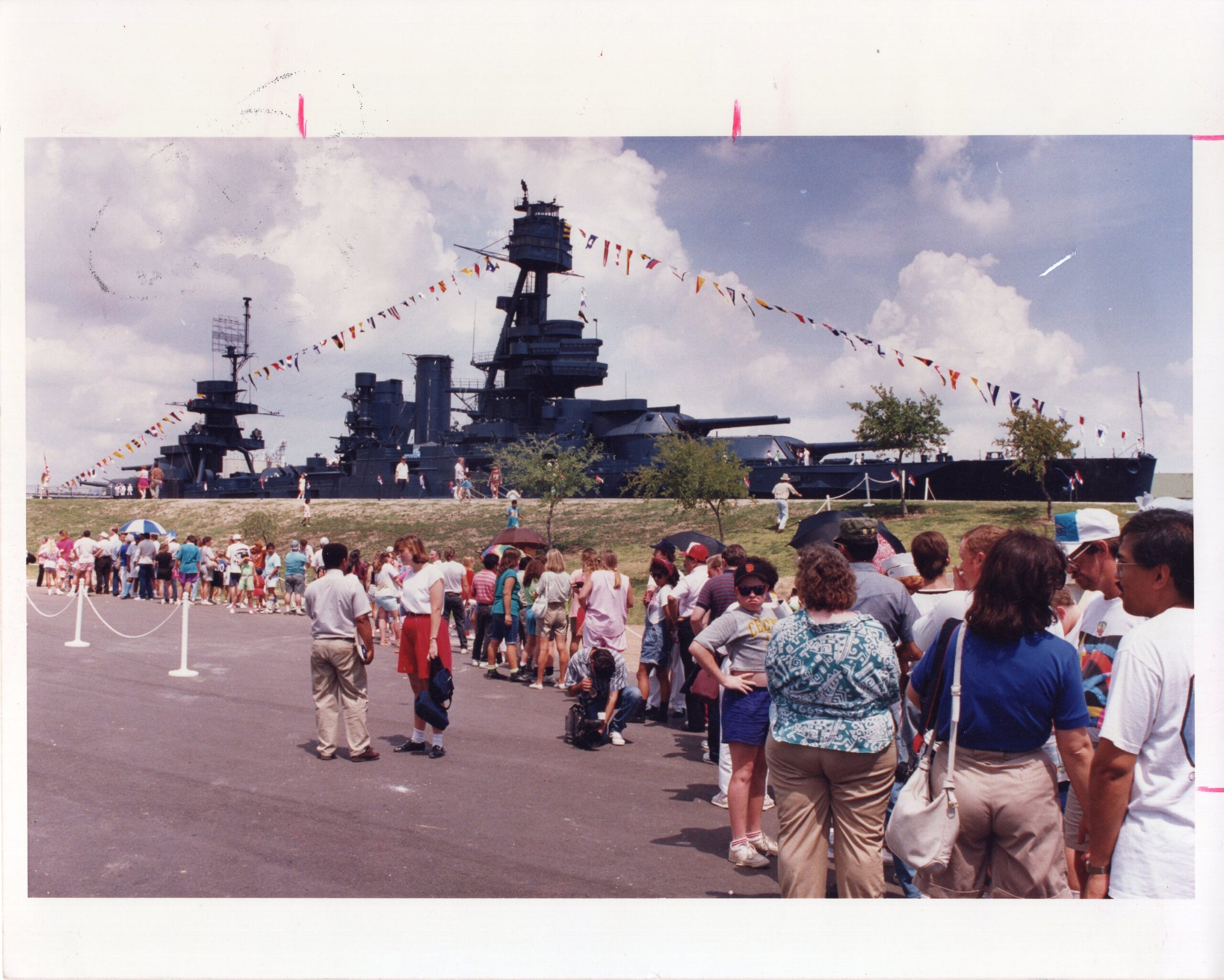

James Burke is a History PhD candidate at the University of Houston and has worked as curatorial staff with Battleship Texas since 2020.

